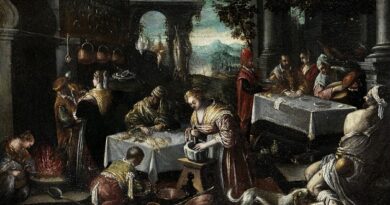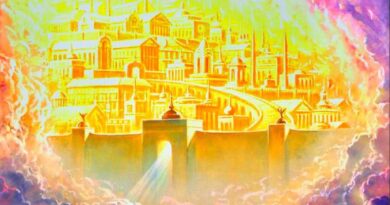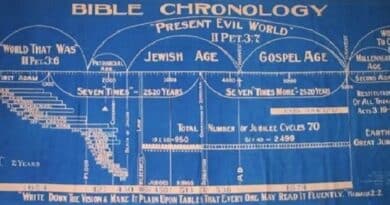“Afterlife” in Biblical View – Part 4
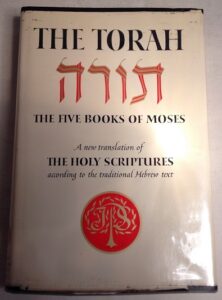
A New Translation of The Holy Scriptures according to the traditional Hebrew text , 1962:
Other translators have interpreted it to mean ‘soul,’ which is completely inaccurate. The Bible does not say we have a soul. ‘Nefesh’ is the person himself, his need for food, the very blood in his veins, his being.
– Harry Meyer Orlinsky, in interview. The New York Times, October 12, 1962.
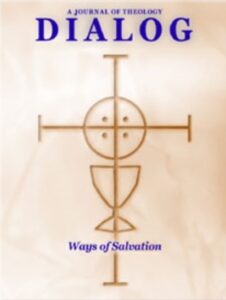
James H. Burtness, Immortality and/or Resurrection, Dialog: A Journal of Theology, Vol. I, Wiley Periodicals, Inc. and Dialog, Inc., NJ, USA, 1962.
When the Bible is read with care… it is noticed that the writers do not observe the rules of a dualistic anthropology. For instance, Matthew records Jesus as saying: “Do not be anxious about your life, what you shall eat or what you shall drink!” The word translated “life” is ψυχή, which could have been rendered “soul.” But the translators do not use “soul” because it would sound strange to have the soul eating and drinking. Yet a similar use of ψυχή in Luke 12:19 is translated “soul.” The Bible is replete with instances of assigning “bodily” functions to the soul and “psychic” functions to the body. The soul is said to hunger (Ps. 107:9) and to thirst (Prov. 10:3;17:7). On’the other hand, the bowels are said to be cruel (Prov. 12:10). And the loins are filled with anguish (Is. 21:3). This interchange of bodily and psychic functions in the Bible is similar to our own use of the word “heart” in connection with the concept of love, or as a term to designate the center of personal life. Yet we are so thoroughly dualistic in our thinking that even when we attempt to abolish dualism, the word which is coined for the purpose betrays a dualistic orientation. “Psychosomatic” is a word which is a combination of the words soul and body. But such a term would be unthinkable to the Hebrew, to whom it would be a simple redundancy meaning man-man. For these various anthropological categories do not refer to different parts of a man at all, but refer rather to a man as a totality, described from different points of view.
… In the New Testament we find the expression: “resurrection of the dead,” but not the expression “resurrection of the body,” since neither the idea nor the word are to be found in Hebrew. The resurrection of the dead is the resurrection of man. The councils, in order to avoid a Platonic interpretation of resurrection, and to ensure that the “resurrection” of Revelation should not be confused with the “immortality of the soul” of the Greek philosophies, felt obliged to specify: cum corporibus suis. The addition was necessary in the circumstances because the biblical idea was being introduced into a world of dualistic thought. Therefore, to give the full equivalent of what the Bible calls the resurrection of the dead, they had to specify that this meant the whole man, that is, in the Greek way of speaking, the soul and the body …. It is something of an historical joke that the phrase “resurrection of the body,” originally added to combat a dualistic anthropology, should later be used to support it.
– pp. 47, 48.
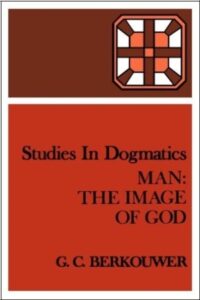
Gerrit Cornelis Berkouwer, Studies In Dogmatics. Man: The Image of God, WM. B. Eerdmans Publishing Company, Grand Rapids, MI, USA, 1962:
“It appears clearly, then, that Scripture never pictures man as a dualistic, or pluralistic being, but that in all its varied expressions the whole man comes to the fore, in all his guilt and sin, his need and oppression, his longings and his nostalgia. Ant it is thus a priori unlikely that the Biblical view of man will distinguish a higher and a lower part in man implying that the higher part is holier than the lower and stands closer to God, the lower as such then being impure and sinful and further away from the God of life. Such a view of higher and lower in man usually forms the background for anthropological dualism and often also manifest itself in theology. The soul then comes to be thought of as closer to God than the body, which forms the lower part of man. And though the creation of the whole man is not denied, nevertheless it often becomes difficult to honor man’s body as part of his full and genuine creatureliness and humanness. We shall not here analyze more closely this depreciation of man’s body, which came to the fore in theology under the influence of Greek thought, and which showed itself not only in the theory of salvation from the body as from a lower form, but also in the practice of ascetism. It is clear that there is no room for such a conception of a higher and lower part in the Biblical view of man. This is especially apparent from the fact that sin, the evil and apostate in man, is never related to one or another part of man in the sense of an anthropologically distinct part, and is never localized in man, as though evil has its seat here or there – though there have often been attempts to find such localizations in the Scripture.
… It has been pointed out, in the first place, that the contrast between sarx (and sooma) and pneuma in Paul’s thought is not a contrast between body and spirit. This is clear from Rom. 8:6, where Paul speaks of the mind of the flesh, and I Cor. 3:3, where carnality is associated with such spiritual matters as jealousy and envy, and Galatians 5:19ff., where the “works of the flesh” include similar spiritual things such as idolatry, sorcery, envy, and so forth. And furthermore, Paul speaks not only of psyche and sooma as needing sanctification, but also of pneuma (I Thess. 5:23). He exhorts the Christian community to “cleanse” themselves form “all defilemente of flesh and spirit” (sarx and pneuma) (II Cor. 7:1). The contrast is thus clearly not one between the body, as the seat of sin, and the spirit, above sin. Paul does not view the body as of lesser worth; indeed, he exhorts the church to “presente your bodies as a living sacrifice, holy, acceptable to God, which is your spiritual service” (Rom. 12:1). His concern is not with vilifying the body, but rather in seeing that sin is not master in the body (Rom. 6:12). His struggle is not against the body, but for the body, that it might be directed rightly: “Neither present yours members unto sin as instruments of unrighteousness, but… as instruments of righteousness unto God” (Rom. 6:13). Thus the body is not na instrument of whoredom, but for the Lord, and our bodies are members of Christ (1 Cor. 6:13, 15; cf. 19).
Further evidence of the impossibility of Paul’s seeing in sarx, in the body, an evil and sinful bodiliness, is the fact that he also uses the term “sooma” for body – and this is a term closely bound up with man’s true humanness. Thus Paul’s thought is far removed from a gnostic dualism, in which the soul is imprisoned in the body and longs for its escape.”
– pp. 203-205.
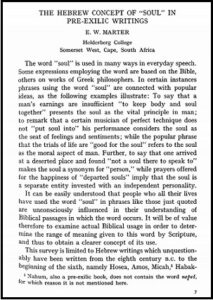
E. W. Marter, The Hebrew Concept of “Soul” in Pre-Exilic Writings, Helderberg College, Cape, South Africa, 1964.
The Soul That Man Has
In about fifty per cent of the instances where nep̄eš appears as something a man has (this means in 40 passages in the writings under review) the KJV gives the rendering “life.” Who can doubt the correctness of this translation in the following examples? Nathan advised Bathsheba to report Adonijah’s attempted coup d’état in order to “save thine own life, and the life of thy son Solomon.” Elijah fled from Jezebel’s murderous designs and complained, “I only am left and they seek my life.” Benhadad’s servants advised him to throw himself on the mercy of Ahab, “peradventure he save thy life.” The third captain sent with his men to arrest Elijah “fell on his knees . . . and said. . . O man of God) I pray thee, let my life, and the life of these fifty thy servants, be precious in thy sight” (1 Ki 1:12; 19:10, 14; 20:31; 2 Ki 1:13).
The student of Scripture will probably agree also with the remainder of the forty such instances; but when he reads Hezekiah’s words of gratitude for the fifteen years added to his life, “For the grave cannot praise thee, death cannot celebrate thee… as I do this day,” he will wonder how it came about that the KJV does not make him say, as the RSV, “thou hast held back my life from the pit of destruction,” but instead reports him as saying “thou hast in love to my soul delivered it from the pit” (Is 38:17, 18). He may also wonder why Jeremiah, according to the KJV, should promise King Zedekiah that if he would surrender to the Babylonians “thy soul shall live” instead of “your life shall be spared” (Jer 38:17, RSV). There are a dozen such instances. This would bring the total to fifty-two. In several of these other twelve instances, as already noted, the RSV has changed “soul” to “life,” thereby supporting our conclusions, – and yet not in all. For instance, in the very verse preceding the last mentioned instance, where the KJV has “who made us this soul” the RSV has “who made our souls,” whereas both Moffatt and Powis Smith have “who made this life of ours” (Jer 38:16).
The Soul Can DieIn the literature under review nep̄eš occurs 124 times. Of these occurrences, 109 refer to the human nep̄eš. Of these 109 instances, no less than 48 plainly indicate that the human nep̄eš dies. In other words, 44 per cent of the occurrences of the word nep̄eš in reference to man show that the soul of man is mortal. This evidence is overwhelming. We have already cited Benhadad’s suit for his “life,” Jeremiah’s complaint against conspirators, the advice that saved Bathsheba’s “life,” and the miracle that prolonged the “life” of Hezekiah (1 Ki 20:32; Jer 18:20, 22; 1 Ki 1:12; Is 38:17, 18).
Of the 48 instances, the one that is most likely to perplex the modern Bible reader is the story of the raising of the Phoenician widow’s son by Elijah. The RSV still uses the identical words of the KJV, “the soul of the child came into him again, and he revived.” How much more clear the rendering of Moffatt, “the child’s life came back and he revived,” or that of Powis Smith, “the life of the child came back to him again, so that he lived’ (1 Ki 17:22). Expressed in connection with this very text and the similar passage in Gn 35:18 the opinion of a thorough scholar of earlier days is significant: “נֶ֫פֶשׁ hath been supposed to signify the spiritual part of man, or what we commonly call his soul: I must confess, that I can find no passage where it hath undoubtedly this meaning.”
The nep̄eš can die whether it is the soul a man has or the soul he is. In the story of Elijah the word is rendered both ways with reference to the same event in a single verse: “And he requested for himself that he might die; and said, It is enough; now, O Lord, take away my life” (1 Ki 19:4). The RSV does not materially change this two-fold rendering, nor is there need to do so. Only when nep̄eš is rendered by the English word “soul” do these become obscure. The popular and theological accretions in meaning that have become attached to the English word are a hindrance to a proper understanding of the Hebrew word under consideration.
A recent Oxford publication expresses the common popular – and erroneous – view when it says: “The Scriptures are explicit . . . on . . . the distinction between soul and body, the creation of the soul of the first man . . . and its immortality.” This work is much nearer the truth when it goes on to say that the early Fathers reflect the confusion of pagan philosophies on this subject, and that the definition of the soul by Thomas Aquinas as “an individual spiritual substance” that “may be severed from the body and lead a separate existence… after death” was taken over from the Greek philosopher Aristotle.
Consistant with the findings of the present survey, more and more scholars are recognizing the truth of the claim made by N. H. Snaith that “immortality of the soul… is not a Biblical idea at all.” “To the Hebrews, man is a body animated by a life-soul (nephesh), and when the man is dead, there is no life-soul anywhere.”
What Does Nep̄eš Mean?
The soul that a man is is simply the living being a man is. The soul that a man has is simply his life, in any manifestation of that life. In the Hebrew concept the nep̄eš a man is and the nep̄eš a man has are one and the same; namely, the life that constitutes a man a living being and the living being so constituted. It is but a trick of language, accentuated by the difficulties of idiomatic translation, that appears to separate this comprehensive meaning into two. In the original accounts of the creation of every living soul, the word nep̄eš is qualified by the word hayyâh (חַיָּֽה “living” or “life”, Gn 1:20, 21, 30; 2:7, 19). In the basic Hebrew concept every nep̄eš on earth had its origin in the gift of “life” (חַיִּ֣ים ḥayyîm, Gn 2:7; 7:15, 21, 22). Every manifestation of activity in that newly constituted being called a nep̄eš, whether physical, mental, moral, or emotional, was a manifestation of that life, and hence nep̄eš itself became a synonym for “life,” as well as the name of the “total psychophysical organism” thereby constituted. The Living God created all other living beings. God, the great nep̄eš, created every other nep̄eš. As He, the Great Living One, is a nep̄eš in His higher sphere of existence and activity, so man, is creature, is a nep̄eš in his sphere. Man has life; he is a living being. When his life ceases, he ceases: the nep̄eš, both as life and as living being, is no more. This is the pre-exilic Hebrew concept of the human “soul.” It comprehends man in all his powers of mind and body, manifesting life, not in one aspect of being, but in the total self, whether appetite or emotion, reason or purpose, consciousness or conscience. It is life as it appears in man, or it is the man himself as long as he has life.
– pp. 104-108.
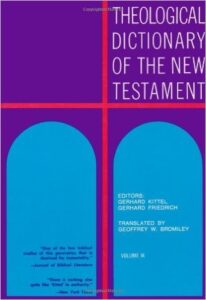
Gerhard Kittel and Gerhard Friedrich, Theological Dictionary of the New Testament (TDNT), USA, 1964-1976:
The deciding mark of the living creature is breathing, and its cessation means the end of life. Hence the root נפשׁ in the form of the noun נָ֫פֶשׁ [nephesh], which occurs 755 times in the Hbr.Bible, denotes “life” or “living creature,” the special sense of “breath” being expressed by נְשָׁמָה [neshamah], although often this shares the development of נָ֫פֶשׁ [nephesh]. Dt. 20:16; Jos. 10:40; 11:11, 14; 1K. 15:29; Ps. 150:6; Is. 57:16. One might say that נָ֫פֶשׁ [nephesh] always includes נְשָׁמָה [neshamah] but is not limited to it. In 1 Kings 17:17 lack of נְשָׁמָה [neshamah] causes the departure of נָ֫פֶשׁ [nephesh], which returns when the prophet gives the child breath again, for נָ֫פֶשׁ [nephesh] alone is what makes a living creature into a living organism.
…Yet one should not conclude that the נָ֫פֶשׁ [nephesh] is an immaterial principle which can be abstracted away from its material sub-structure and which can lead an independent existence. The departure of the נְשָׁמָה [nephesh] is a metaphor for death; a dead man is one who has ceased to breathe…
נָ֫פֶשׁ [nephesh] is the usual term for a man’s total nature, for what he is and not just what he has. This gives the term priority in the anthropological vocabulary for the same cannot be said of either spirit, heart, or flesh. The classical text in Gn. 2:7 clearly expresses this when it calls man in his totality a נפש חיה [nephesh hayyah]. Perhaps in view of its over-logical formulation this passage never became normative for the OT as a whole. It should be noted that it expresses the external aspect of a man rather than the modalities of his life. The word נָ֫פֶשׁ [nephesh] developed in two main directions which correspond more to structures of thought than to a chronological sequence. The two directions might be defined in terms of form and movement. The נָ֫פֶשׁ [nephesh] is almost always connected with a form. It has no existence apart from a body. Hence the best translation in many instances is “person” comprised in corporeal reality. The person can be marked off and counted, Gn. 12:5; 46:18; Jos. 10:28; 11:11. Each individual is a נָ֫פֶשׁ [nephesh], and when the texts speak of a single נָ֫פֶשׁ [nephesh] for a totality, the totality is viewed as a single person, a ‘corporate personality.’ Hence נָ֫פֶשׁ [nephesh] can denote what is most individual in human nature, namely, the ego, and it can become a synonym of the personal pronoun, Gn. 27:25: “that my נָ֫פֶשׁ [nephesh] (I) may bless thee” and Jer. 3:11: “Unfaithful Israel has justified its נָ֫פֶשׁ [nephesh]i. e. has shown itself to be righteous.”
– Vol. 9, 1974, pp. 618-620. Hebrew words transliterated.
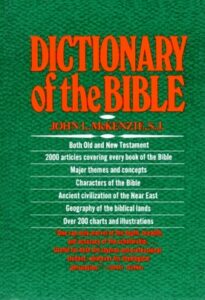
Dictionary of the Bible, The Bruce Publishing Company, New York, USA and Collier MacMillan Ltd., Toronto, Canada, 1965. (This cover is from Reprint Edition, 1995):
Death. 1. OT. The OT exhibits a certain development in the Israelite ideas of death. This development is not progressive; one may find in BS a concept of death which scarcely differs from the concept found in the Pnt. The prevailing view in the OT is that death is terminal. One’s concept of death is ultimately determined by one’s concept of life; hence the Hb concept of the human person as an animated body rather than an incarnated spirit made the end of animation appear to be the cessation of all vital activity. When a person died, the “spirit” departed; the deceased continued to exist as a “self” (nepeš) in Sheol’, but was incapable of any vital activity or passivity. The dead take no part in divine worship (Pss 6:6; 30:10; 88:11; 115:17; cf also Is 38: 11, 18). It is against this background of OT belief that Jesus said that God is not the God of the dead but of the living (Mt 22:32; Mk 12:27; Lk 20:38). Death is accepted as the natural end of man (2 S 14: 14). The ideal death was attained in the fullness of old age with undiminished powers (Gn 25:8; Jb 21 :23 f; 29: 18-20). One who dies such an ideal death dies easily and quickly; he goes down to Sheol “in a moment” (Jb 21: 13) and is not the victim either of a premature death or of a lingering wasting disease. Such a death “embitters” one (Jb 21: 15). The sense of the story of Paradise (Gn 2-3) is that death is the consequence of the primeval fall and that man was not created by God to be mortal. In the imagery of the Paradise story immortality is attained by eating the fruit of the tree of life, from which man is now excluded. This story has some resemblance to the Mesopotamian account of the search of Gilgamesh for the plant of life, which Gilgamesh found only to lose it by theft at once, as well as to the story of Adapa. Adapa was admitted to the presence of the gods but warned against accepting the food of death and the water of death, which would be offered him. Actually he was offered the food of life and the water of life. The that death came as the consequence of a primeval fall is not reflected elsewhere in the OT before BS 25:24. There are occasional expressions in the OT of a strain of hope that death is not as terminal as it seems. Thus in Ps 16:9 the poet rejoices that Yahweh will not abandon him to Sheol nor permit him to see the pit. In Ps 49: 16 the poet is assured that God will redeem him from Sheol. Similar expressions are not uncommon in the Pss and usually signify no more than preservation from sudden or premature death. The context of these Pss seems to go beyond this, since the whole problem of life and death generally is involved particularly in Ps 49. Even clearer is the assurance of the poet in Ps 73:23 ff that he has no portion except Yahweh in heaven or in earth. If Yahweh’s promises and His loving kindness are everlasting, then there must be some way in which the loyal Israelite will experience them. How he shall do it is not formulated in this early phase of Israelite belief. The Israelite conception of death was affected by the underlying cosmic myth of creation in which so much Israelite thought was cast. The struggle between order and chaos, light and darkness, was also a struggle between life and death. In the ancient Semitic myths of creation life and death were alternately victorious. As Hb belief in Yahweh did not permit them to accept the idea that His power and will for good were not suficient to overcome the forces of evil, so also they could not believe that He was not victorious over death; at least death could not touch Him. Obviously, however, as they developed a belief in a final victory of Yahweh over the forces of darkness, evil and chaos, so likewise the logic of their faith demanded that He overcome death also. This development appears rather late in OT belief; we find no certain trace of a clear belief in the resurrection of the dead before the 2nd century BC in Dn. The immortality of the soul as proposed in WS, a product of Alexandrian Judaism, was really an element foreign to Hb belief and Hb psychology which was never assimilated into the OT or NT.
– Vol. 1, pp. 183, 184.
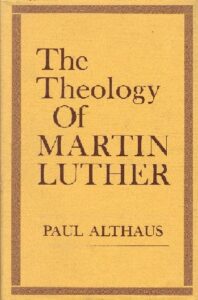
Paul Althaus, The Theology of Martin Luther, Fortress Press, 1966:
The hope of the early church centered on the resurrection of the Last Day. It is this which first calls the dead into eternal life (I Cor. 15; Phil 3:21). This resurrection happens to the man and not only to the body. Paul speaks of the resurrection not ‘of the body’ but ‘of the dead.’ This understanding of the resurrection implicitly understands death as also affecting the whole man…
No emphasis is, however, placed on this second factor but only on the first, that is, thas souls are truly alive and blessed already before the resurrection. Thus the original Biblical concepts have been replaced by ideas from Hellenistic, Gnostic dualism. The New Testament idea of the resurrection which affects the total man has had to give way to the immortality of the soul. The Last Day also loses its significance, for souls have received all that is decisively important long before this. Eschatological tension is no longer strongly directed to the day of Jesus’ Coming. The difference between this and the Hope of the New Testament is very great.
– pp. 413, 414.
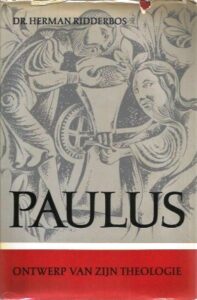
Herman Ridderbos, Paulus, Ontwerp van zijn theologie, Kampen, Netherlands, 1966 (Paul: An Outline of His Theology. Translator: John Richard de Witt. Wm. B. Eerdmans Company, Grand Rapids, MI, USA, 1975):
Psyche in Paul is neither, after the Greek-Hellenistic fashion, the immortal in man as distinct from the soma, nor does it denote the spiritual as distinct from the material. Psyche stands in general for the natural life of man (cf. Rom. 11:3; 16:4; 1 Thess. 2:8 – to give his “soul,” that is, his life for someone – et al.) This is is most clearly evident in the well-known pronoucements in 1 Corinthians 15:44ff., where Paul places the first man Adam as “living soul” over against Christ as “life-giving Spirit” and speaks of the “physical body” (soma psychikon) sown in weakness and perishablenes as distinguished from the spiritual body that is to be raised. Psyche and psychical here plainly mean the natural and earthly life, which has no subsistence in itself but is subject to death and destruction; it is here used all but synonymously with “flesh and blood” in verse 50, that which has been taken form the earth (v. 47). In conformity with this Paul speaks as well of the “psychical man,” who cannot understand the things of the Spirit of God (1 Cor. 2:14), and whom he places over against the spiritual, pneumatic man. In 1 Corinthians 3:1 he equates psychical with sarkic, carnal. It is evident, therefore, that psychical in this context denotes the limited-human that in itself is incapable of grasping or understanding the divine wisdom, of which Paul has said in the preceding chapter that it is the object of God’s special announcement. Psychic and sarkic thus approximate each other very closely here, in that they both denote man in his limitedness and humanity over against the divine possibilities an realities. Otherwise psychical and psyche is not in itself a disqualification. Other than sarx it does not have the special pregant significance of the natural man in his having turned-away-from-God, in his sin. Even when it is not set over against the pneuma given by God it describes man in his natural life, especially according to his inner existence, as may appear in particular from the combinations “of one soul” (= of one mind; Phil. 2:2), “of like soul” (= of one spirit; Phil. 2:20), “well of soul” (= cheerful; Phil. 2:19, et al.).
Paul speaks of pneuma in much the same sense as of psyche, at least so long as he intends the human spirit and not the Spirit of God given to believers (as is usually the case when he speaks of pneuma). Just as psyche, pneuma denotes man in his natural existence, approached from within. The clearest evidence for this is surely the parallel use of pneuma in 2 Corinthians 2:13 (I had no rest for my pneuma) and of sarx in 2 Corinthians 7:5 (our sarx had no rest). Both times it is a matter simply of man in his natural condition, which can be denoted by spirit as well as by flesh. Here again there is no trace of the spirit as a supersensual divine principle inherent in man. Accordingly when Paul says elsewhere: the grace of Christ be with “your spirit” (Gal. 6:18; Phil. 4:23; Phlm. 25), this means the same thing as “with you” (Rom. 16:20; Eph. 6:24, et al.). In the same sense as “one of soul,” etc., the apostle speaks of “in one spirit” (Phil. 1:27), “fellowship of the spirit” (Phil. 2:1, et al.). Nothing else is denoted by all this than man in his natural, inner existence. Accordingly when it is said in 1 Thessalonians 5:23: “may your spirit and soul and body be preserved entire, without blame at the coming of our Lord…,” in all probability one is not to think here of a trichotomistic representation, in which three parts are to be exactly distinguished from each other in man, and in which the pneuma denotes a separate, higher area of life, distinct from the psyche. Rather, we have to do here with a (perhaps traditional) plerophoric mode of expression in which the inner life of man is denoted in two different ways, buto to which no particular psychological or anthropological significance can be ascribed. Paul speaks of the inner man in more ways than one. He uses the word “soul” as well as “spirit” for this without it always being possible to distinguish between them in a technical sense.
– English edition, pp. 120, 121.
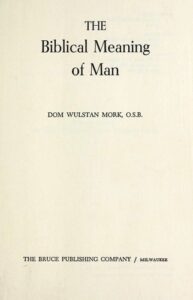
Dom Wulstan Mork, The Biblical Meaning of Man, Bruce Publishing Company, Milwaukee, Wisconsin, USA, 1967:
“Man is seen in the Bible as whole. There is no dividing him into body and soul, or body, soul, and spirit. Man divided against himself is straight Platonism; it is never the thought of revelation. The dichotomy of body and soul either springs from or ends up as body versus soul. The body conceived as the prison of the soul – a concept which has done so much harm to Christian spirituality – is platonic not Christian, and certainly not Hebrew.”
– p. 14.
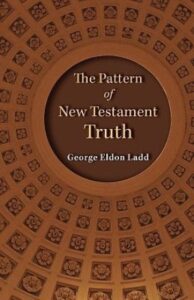
George Eldon Ladd, The Pattern of New Testament Truth, Wm. B. Eerdmans Publishing Company, Grand Rapids, Michigan, USA, 1968:
The Old Testament View
The Old Testament view of God, man, and the world is very different from Greek dualism. Fundamental to Hebrew thought is the belief that God is the creator, that the world is God’s creation and is therefore in itself good. The Greek idea that the material world is the sphere of evil and a burden or a hindrance to the soul is alien to the Old Testament.
When God created the world, he saw that it was good (Gen. 1:31). The world was created for God’s glory (Ps. 19:1); the ultimate goal and destiny of creation is to glorify and praise its creator (Ps. 98:7-9). The Hebrews had no concept of nature; to them the world was the scene of God’s constant activity. Thunder was the voice of God (Ps. 29:3, 5); pestilence is the heavy hand of the Lord (I Sam. 5:6); human life is the breath of God inbreathed in man’s face (Gen. 2:7; Ps. 104:29).
To be sure, the world is not all it ought to be. Something has gone wrong. But the evil is not found in materiality, but in human sin. In creation, God displayed his goodness by making man the chief of all his creatures and by subjecting the created world to man’s care (Gen. 1:28), entrusting to him dominion over all other creatures. When man in proud self-assertion refused to accept the role of creaturehood, when he succumbed to the temptation to “be like God” (Gen. 3:5) and fell into sin, God placed the curse of death upon man and the burden of decay and evil upon the entire world, so that man might be continually reminded of the fundamental fact that sin disrupts the enjoyment of God’s gifts, even in the physical realm. Life and happiness are God’s gifts; pain, toil and death are the toll of sin.
The Old Testament never views the earth as an alien place nor as an indifferent theater on which man lives out his temporal life while seeking a heavenly destiny. Man and the world together belong to the order of creation; and in a real sense of the word, the world participates in man’s fate. The world is affected by man’s sin. Although the world was designed to reflect the divine glory and still does so, it is a tainted glory because of sin. This intimate relationship is sometimes expressed poetically. Because of human wickedness, “the land mourns, and all who dwell in it languish, also the beasts of the field and the birds of the air and, even the fish of the sea are taken away.” (Hos. 4:3).
Behind this concept of man and the world is the God’s theology that both man and the world are God’s creation, and that man’s true life consists in complete obedience to and dependence upon God. This can and be illustrated by the Old Testament concept of life. There is no antithesis between physical and spiritual life, between the outer and the inner dimensions in man, between the lower and higher realms. Life is viewed in its wholeness as the full enjoyment of all of God’s gifts. Some Christian theologies would consider this crassly materialistic; but a profound theology underlies it. Life, which can be enjoyed only from the perspective of obedience to God and love for him (Deut. 30:6), means physical prosperity, productivity (Deut. 30:9), a long life (Ps. 34:12; 91:16), bodily health and well-being (Prov. 4:22; 9:23; 22:4), physical security (Deut. 8:1); in brief, the enjoyment of all of God’s gifts (Ps. 103:1-5). However, the enjoyment of these good things by themselves cannot be called life, for life means the enjoyment of God’s gifts in fellowship with God. It is God alone who is the source of all good things, including life itself (Ps. 36:9). Those who forsake the Lord will be put to shame, for they have abandoned the fountain of life (Jer. 17:13). While health and bodily well-being are included in life, man does not live by bread alone; and the enjoyment of God’s gifts apart from obedience to the word of God is not life (Deut. 8:3). Life, therefore, can be simply defined as the enjoyment of God’s gifts in fellowship with the God who gives them. God alone has the way of life; it is only in his presence that there is fullness of joy and everlasting pleasures (Ps. 16:11).Behind this understanding of life is a profound theology. Man shares with nature the fact of creaturehood. But man stands apart from all other creatures in that he was created in the image of God. For this reason, he enjoys a relationship to God different from that of all other creatures. However, this does not mean that men will ever transcend creaturehood. Indeed, the very root of sin is unwillingness to acknowledge the reality and implications of creaturehood. The fact that man is a physical creature in the world is neither the cause nor the measure of his sinfulness and thus a state from which he must be delivered. Sin does not result from the body’s burdening down the soul or clouding the mind; it results from rebellion of the will, the self. The acceptance of man’s creaturehood, the confession of complete and utter dependence upon the Creator God, is essential to man’s true existence. Man truly knows himself, recognizes his true self, only when he realizes that he is God’s creature. Then he accepts the humble role of one whose very life is contingent upon God’s faithfulness and whose chief joy is to serve and worship his Creator. The root of sin is found not in succumbing to the physical side of his being, but in the intent to lift himself out of his creaturehood, to exalt himself above God, to refuse to give God the worship, praise, and obedience that are his due.
For this perspective salvation does not mean deliverance from creaturehood, for it is an essential and permanent element to man’s essential being. For this reason the Old Testament never pictures ultimate redemption as a flight from the world or escape from earthly, bodily existence. Salvation does not consist of freeing the soul from its engagement in the material world. On the contrary, ultimate redemption will involve the redemption of the whole man and of the world to which man belongs. This is the theology behind the doctrine of bodily resurrection, which only begins to emerge in the Old Testament but which is clearly developed in Judaism and the New Testament.
The same basic theology is seen everywhere in the prophets in their hope of the redemption of the world. While the prophets in only a few places speak of resurrection (e.g., Isa. 25:8; Ezek. 37; Dan. 12:2), they constantly look forward to the consummation of God’s redemptive purpose on a transformed earth. The nature of this transformation is diversely described. Sometimes the new world is depicted simply in terms of material abundance. The land will become so fruitful that there will be no lapse between the seasons. The grape harvest will be so prolific that the hills will be inundated in rivers of wine. War and devastation will be replaced by peace and security (Amos 9:13-15). On other occasions the transformation will be more radical. Isaiah describes it as new heavens and a new earth (65:17; 66:22), where premature death will be banished, peace and security enjoyed, and the curse of violence lifted from nature. “The wolf and the Iamb shall feed together, the lion shall eat straw like an ox. They shall not hurt or destroy in all my holy mountain, says the Lord” (Isa. 65:25).
The world is to be redeemed from its bondage to evil not by any process of gradual evolution nor through any powers resident in the world, but by a mighty act of God — a divine visitation. Some scholars have held that two different kinds of eschatology are to be found in Judaism: an authentic prophetic Hebrew hope that looks for an earthly kingdom arising out of history, and a dualistic hope that resulted from despair of history as the scene of God’s Kingdom and in its place looked for a transcendental order to be inaugurated by an irruption into history of the heavenly order. We believe this critical theory to be unsupported by our sources, and we have argued at length that the prophetic hope never looks for the establishment of God’s Kingdom to result from forces imminent within history but only by a divine visitation—an irruption from outside into history. Even in the oldest conceptions, God’s kingship could be absolutely established only at the cost of a great change that would make an end of the present state of things and witness the establishment of something new. “There is no eschatology without rupture. In the careful words of H. H. Rowley, the Day of the Lord was conceived “as the time of the divine inbreaking into history in spectacular fashion. While God was believed to be always active of the plane of history, using nature and men to fulfill his ends, the Day of the Lord was thought of as a day of more direct and clearly manifest action.”
While the prophets looked forward to a final visitation of God to redeem both God’s people and the physical world, they were not pessimistic about the nature of historical existence before the coming of the Day of the Lord. One of the wholesome emphases of modern biblical theology is the acting of God in history. G. Ernest Wright has promoted the view that biblical theology is the recital of the redeeming and judicial acts of God in history; and perhaps the greatest contemporary work on Old Testament theology — that of Gerhard von Rad — is a theology of the kerygma: the proclamation of the mighty deeds of God in history. James Barr has provided a healthy emendation of the view by insisting that in the thought of the Old Testament revelation does not occur in events alone but also in words. von Rad recognizes that the acts and the words belong together. “History becomes word, and word becomes history.” Several years ago, the present author expounded a similar view. God does reveal himself in events; but the events do not speak for themselves. Their inner meaning must be set forth in words. Thus revelation occurs in an event-word complex, the prophetic interpreting word being an integral part of the event.
Back of this concept of revelation is a profound theology of God: a living, personal God who is known to man because he chooses to reveal himself by visiting man in history. The God of the Old Testament is always “the God who comes.” “Let the floods clap their hands; let the hills sing for joy together—before the Lord, for he comes to rule the earth” (Ps. 98:8). “The Lord came from Sinai, and dawned from Sinai upon us; he shone forth from Mount Paran, he came from the ten thousands of holy ones, with flaming fire at his right hand” (Deut. 33:2). “For behold, the Lord is coming forth out of his place, and will come down and tread upon the high places of the earth. And the mountains will melt under him and the valleys will be cleft like wax before the fire, like waters poured down a steep place” (Mic. 1:3-4). He came to Israel in Egypt to make them his people; he came to them again and again in their history; he will come again in a final eschatological visitation in the future to judge wickedness and to establish his Kingdom.
For our present purpose, the important thing to note is the difference between the Hebrew and the Greek views of reality. For the Greek, the world, nature, human history — in sum, the sphere of the visible — formed the realm of flux and change, of becoming, of the transient. Reality belonged to the realm of the invisible, the good, the unchanging, which could be apprehended only by the mind of the soul transcending the visible. Thus salvation was found in the flight of the soul from the world to the invisible world of God.
For the Hebrew, reality was found in God who makes himself known in the ebb and flow of both nature and historical events by his acts and by his words. God comes to men in their earthly experience. Thus the final redemption is not flight from this world to another world; it may be described as the descent of the other world — God’s world — resulting in a transformation of this world.
The contrast between the Greek and Hebrew views of God and the world is reinforced further by the Old Testament anthropology. Hebrew man is not like the Greek man — a union of soul and body and thus related to two worlds. He is flesh animated by God’s breath (ruach), who is thus constituted a living soul (nephesh) (Gen. 2:7; 7:22). Nephesh (soul) is not a part of man; it is man himself viewed as a living creature. Nephesh is life, both of men (Ex. 21:23; Ps. 33:19) and of animals (Prov. 12:10). If nephesh is man as a living creature, it can be used for man himself and indicate man as a person, and also become a synonym for “I,” “myself.” By an easy extension, nephesh is man seen in terms of his appetites and desires (EccI. 6:2, 7) or in terms of his emotions or thoughts (Hos. 4:8; Ps. 35:25; Gen. 34:8; Ps. 139:14; Prov. 19:2).
If nephesh is man’s life, it can be said to depart at death (Gen. 35:18; I Kings 17:21) or return if a person revives (I Kings 17:22). If the nephesh stands for man himself, it can be said that his nephesh departs to the underworld or sheol at death (Pss. 16:10; 30:3; 94:7). However, the Old Testament does not conceive of disembodied souls existing in the underworld after departing from the body, as do Homer and other early Greek writers. The Old Testament does not see souls in sheol, but shades (rephaim), which are a sort of pale replica of man as a living creature. These shades are not altogether different from Homer’s souls in Hades, and both represent a common conviction of natural theology, namely, that death is not the end of human existence, but that life in its fullness must be bodily life.
However, in following the course of their development, the Greek and the Hebrew thought sharply diverge. The Greeks, as we have seen, came to believe that there was something divine about the soul and that it must find release from bodily existence to take its flight to the stars. Hebrew thought developed very differently. There began to emerge, even in the Old Testament, the conviction that if men enjoy fellowship with God in life, this fellowship could not be broken by death. “For thou dost not give me [lit., my soul] up to sheol, or let thy godly one see the pit. Thou dost show me the path of life; in thy presence there is fullness of joy, in thy right hand are pleasures forevermore” (Ps. 16:10-11). “But God will ransom my soul from the power of sheol, for he will receive me” (Ps. 49:15). “Thou dost guide me with thy counsel, and afterward thou wilt receive me to glory” (Ps. 73:24). While such sayings hardly provide us with material for a doctrine of the intermediate state, they do express the undying conviction of the “imperishable blessedness of the man who lives in God.” They cannot conceive of this fellowship being broken, even by death. As Martin-Achard says, “Without actually being aware of it, the Hasidim are battering the gates of the kingdom of the dead; without reaching the positive assertion of the immortality or resurrection of the believer. . . they are preparing the way for future generations to proclaim that death is impotent against those who are living in communion with the living God.” Later Judaism developed the idea of an intermediate state and sometimes identified the dead as souls, or conceived of the soul as existing after death.112 However, unless there is Greek influence, as in the Wisdom of Solomon (8:19), the continuing existence of the soul in sheol is not due to some intrinsic quality of immortality which it shares with God but to the conviction that since God is the living God and master of both life and death, there must be a blessed destiny for individuals as well as for the nation. Almost always in Judaism, the individual hope finds its realization in bodily resurrection. In only a few places do we find the idea of a blessed immortality of the soul in heaven.113
Footnotes:
112 Josephus War ii. 156; Enoch 9:3,10; Wis. 15:8,14; iv Macc. 18:24.
113 See Enoch 9l:16; 103:4; 104:2; Jub. 23:31; IV Macc. 18:23; Wis. Sol.3:4.
We may now summarize our findings as to the difference between the basic Greek and Hebrew dualism. Greek dualism is that of two worlds, the visible and the invisible, the phenomenal and the noumenal, becoming and being, appearance and reality. Man belongs to both worlds by virtue of the fact that he is both body and soul or mind. “God” can be known only by the control of the bodily appetites, that the mind may be free from material pollutions to contemplate the divine realities. Finally, the soul must escape from the wheel of bodily existence to return to the divine world where it really belongs.
The Hebrew view is not a dualism of two worlds, but a religious dualism of God versus man. Man is God’s creature; creation is the realm of God’s constant activity; and God makes himself known and speaks to men in the ebb and flow of history. Man is not a bipartite creature of the divine and human, of soul and body; in his total being he is God’s creature and remains a part of creation. Therefore the redemption of man and the redemption of creation belong together. Salvation consists of fellowship with God in the midst of earthly existence and will finally mean the redemption of the whole man together with his environment. At the heart of the Old Testament view is God — a living personal being — who visits man in earthly existence to establish fellowship with himself and who will finally visit man to establish his perfect rule and redemption in the world.
In sum, the Greek view is that “God” can be known only by the flight of the soul from the world and history; the Hebrew view is that God can be known because he invades history to meet men in historical experience.
– pp. 31-40.
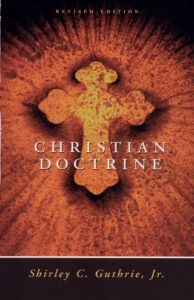
Guthrie, Shirley C., Jr. Christian Doctrine, USA, 1968 (This cover is from the Revised Edition, Westminster John Knox Press, Louisville, KY, USA, 1994):
We have been talking about a point of view that from the perspective of Christian faith is falsely pessimistic because it takes death too seriously: it has no hope for the future because it either does not know about or does not believe in a God Who is stronger than death. Now we have to talk about a point of view that from the perspective of Christian faith is falsely optimistic because it does not take death seriously enough. Its hope for the future is based on confidence in a capacity we have within ourselves to survive death rather than on confidence in God’s power over it. Because the position we are about to criticize and reject is just what many believe is the very foundation of Christian hope for the future, we emphasize from the very beginning that we criticize and reject it not to destroy hope for eternal life but to defend an authentically biblical-Christian hope for it that is far better and far more trustworthy.
We refer to belief in the immortality of the soul. This doctrine was not taught by the biblical writers themselves, but it was common in the Greek and oriental religions of the ancient world in which the Christian church was born. Some of the earliest Christian theologians were influenced by it, read the Bible in the light of it and introduced it into the thinking of the church. It has been with us ever since. Calvin accepted it (Institutes 1.15.2,6), and so did the classical confession of the Reformed churches (Scots Confession, 17; Westminster Confession, 34).
According to this doctrine my body will die, but I myself will not really die. My body is only the shell around my true self. It is not me; it is only the earthly-physical house in which I live temporarily, or the earthly-physical prison in which I am trapped for a while. My true self is my soul, the spiritual part of me that is like God and therefore shares God’s immortality (inability to die). What happens at death, then, is that my immortal soul escapes from my mortal body. My body dies, but I myself live on and return to the spiritual realm from which I came and to which I really belong.
If we follow the Protestant Reformation in seeking to ground our faith on “scripture alone”, we must reject this traditional hope for the future based on belief in the immortality of the soul (even if the Reformers did not follow their own advice at this point). There are several reasons why it is unacceptable from a biblical point of view.
1. Bible-believing Christians must reject the doctrine of the soul’s immortality because it is based on an unbiblical understanding of what the soul is. According to scripture, the soul is not the inward divine (and therefore immortal) part of us that comes from God and returns to God; is simply the God-given “breath of life” that makes us living creatures (see our discussion of body and soul in chapter 10). It is true, then, that when we die the soul “departs” and is “gone”. But that does not mean that the immortal divine part of us has departed to live on somewhere else. It means that life has left us, that our lives have come to an end, that we are “dead and gone”. According to scripture, in other words, my soul is just as human, creaturely, finite – and mortal – as my body; it is simply the life of my body. This does not mean that there is no hope for “life after death”, but it does mean that we have no hope at all if our hope is in our own built-in immortality.
2. We say the same thing in another way when we say that biblically based Christian faith rejects hope in the immortality of the soul because that doctrine denies the terrible reality of death. The Bible does not pretend that death is not bad after all because we do not actually die at all but only “pass on” to a new form of existence when our souls escape our bodies. According to scripture, death is real, total, and dreadful. Jesus himself did not face death with the calmness o fone only “passing over to the other side.” He faced it with “loud cries and tears” (Heb. 5:7) and blood-sweating anguish (Luke 22:44)…
The Bible does not teach that the body is an inferior, worthless shell or prison in which we are trapped and from which we long to escape. It teaches that we were created and are body (male or female body!) as well as soul, and that bodily as well as spiritual life is willed and blessed by God. It also teaches that our hope for the future is not for the soul’s escape from bodily-physical life into some higher and better spiritual realm but for renewal for total human existence as embodied souls and besouled bodies. So it was with Jesus: The New Testament does not tell us that his soul left his body and “went home” to be with God; it tells us that God raise him bodilyfrom the dead and that the same earthly Jesus his disciples had known before (to be sure with a transformed “new” body) returned to the God from whom He had come. So it will be with us: We do not look forward to a finally bleak future in which our “naked” souls live on forever; we look forward to a future in which we, the body-creaturely persons we are now, will live (to be sure in a new way) in communion with God and other people. Whether we think about life in this world or in the world to come, contempt for our own (or any other person’s) bodily life is unbiblical and unchristian. Biblical-Christian hope for the future is hope for human beings who are body and soul in their inseparable unity.
Here we have run into the very heart of the Christian hope for the future. We will ask presently what it means more specifically. The point now is that for the sake of a genuinely biblical-Christian hope for the future we must reject hope in the immortality of the soul. On the one hand, Christians are far more honest than that about the total threat and reality of death. On the other hand, Christian hope is far greater than that. Our hope is not in our own deathless spirituality but in the God who creates and re-creates whole human beings. When Christians confess their hope for the future, they say that they believe in “the ressurrection of the body.”…
In the writings of the Old Testament for the most part there is no hope at all for life beyond life in this world. Individuals may hope that God will bless the righteous and punish the unrighteous in this life, but after this life there is no heaven and no hell, nor any real life at all. Everyone who dies goes to the same place, Sheol, “the land of gloom and deep darkness” (Job 10:21), a region where all the dead have a kind of shadowy existence completely CUT off from God and forgotten by God (Ps. 88:4-6, 10-12; 115:17). Israel’s hope for the world is not hope for a new heaven and earth that will come at the end of world history but hope for the coming of a new king like David (a “Son of David” ) who will bring a political kingdom of prosperity, justice, peace, and true religion for all people within history.
Toward the end of the Old Testament period, Israel’s hope for the future changed when the people were carried off into exile. It became clear that in this life it is not the godly who prosper and the ungodly who suffer but just the opposite. There was no longer any realistic hope for a Davidic kingdom before which the nations of the earth would bow. There arose na “apocalyptic” hope for a great cosmic battle between God and all the demonic forces of evil at the end of history, at the end of which God will be victorious. At that time all de dead will be raised to “everlasting life” or to “shame and everlasting contempt” (Dan. 12:2) to receive the reward or punishment they did not receive in this life, and God (not this or that political leader) will establish na eternal kingdom of righteousness beyond history.
In the New Testament, the book of Revelation develops this apocalyptic hope for the future in greatest detail, but it is also the framework for Jesus’ own proclamation of the coming of the kingdom of God and for the theology of the New Testament writers. As a result of Jesus’ preaching and especially his death and resurrection hope for a final world judgment, the resurrection of the dead and the coming of “a kingdom not of this world” became the foundation of Christian faith…
The Resurrection of the Body
We have said that hope for the resurrection of the body is the Christian alternative to hope for the immortality of the soul. If we are to make this Christian alternative our own, we must answer three questions: Why do we confess it? What does it mean: When does it happen?
1. Why hope for bodily resurrection? The Idea of the resurrection of de dead did not originate with Jesus or the early church. It originated in the apocalyptic eschatology of late Judaism. Jesus’ ministry took place in the midst of a hot debate already going on between the Pharisees who affirmed it and the Sadducees who rejected it. But the first Christians did not hope for resurrection of the dead because Jesus and they agreed with the arguments fo the Pharisees. Nor did they hope for it because they preferred it to speculations and theories about the immortality of the soul. They hoped for it because they believed that it had happened: a dead man actually lived again! Not just a man (so that the event could be considered a freak exception to the rule that dead people stay dead), but one in whom they believed God’s plan for the future of all human beings was revealed. Because God raised Jesus from the dead, we may be sure that God will do the same for everyone. How is this connection between what happened to Jesus and what will happen to all of us made in 1 Cor. 15:12-22 and Rom. 8:11? Once again we see that Christian hope for the future is based on what hás already happened in the past.
2. What does it mean? We began to answer this question in our discussion of the ressurrection of Jesus. We take up here where we left off there. The key to understanding hope for bodily resurrection lies in the fact that for the biblical writers “body,” or “flesh” is a synonym for “human being” Resurrection of the body means resurrection of a person. To hope for it is to hope that my human self, the person that “I” am, will live again. I will not be someone or something different from who and what I am now. I will be myself. The same holds true, of course, for other people.
Now for the biblical writers (as for realistic modern people), it is impossible to think of a human being without a body. How can anyone be a disctint, recognizable individual person without a body? Without ears, eyes, mouths, hands, feet, and the male or female identity that make us the men or women we are, how could we Love, praise, serve, and live in communion with God? How could we recognize, communicate with, and relate personally to other people? Resurrection of persons means necessarily resurrection of their bodies.
This does not mean hope for the revivification or resuscitation of our present physical bodies. The writers of the New Testament knew as well as we do that these bodies may be deforme dor disabled, and that in any case after death they decompose and “return to dust.” Straining to Express the inexpressible, Paul Said that we will have perfect “spiritual bodies” (1 Cor. 15:42-44). We cannot and need not try to conceive exactly what that might mean. But if we follow the rule that our Best clue to what is going to happen to us is what happened to Jesus, we may say that our resurrected body. First John 3:2 says that we do not know what we will be, but we do know that we will be “like him.”
According to the Gospel stories of Jesus’ postresurrection appearances (Matt. 28:9, 10; Luke 24:13-50; John 20:11-29; 21:1-13), the disciples recognized the risen Jesus as the same earthly Jesus they had known before. He was no disembodied ghost. He walked and talked, ate and drank, and could be touched. He had a body. But is was a mysteriously different body. It was so transformed that even those who knew him best did not always recognize him. He could suddenly vanish from sight or appear in a room with locked doors. Whatever we make of the detais of these strange stories, they tell us that there was both continuity and discontinuity between the physical-earthly and the spiritual-resurrected Jesus. He was the same person in a different way.
… In Luke 23:42 Jesus says to the dying thief, “Today you will be with me in Paradise.” In Philippians 1:3 Paul expresses his longing do “depart and be with Christ.” On the other hand, Paul tells us that there is something like a waiting sleep of all the dead until they are all raised at the same time in what was later called a “general resurrection” at the end of history (1 Cor. 15:51-52; 1 Thess. 4:13-18).
Classical Protestant tradition neatly solved this problem by combining the doctrines of the immortality of the soul and the resurrection of the body. When we die, God assigns each of us our eternal destiny. Our souls go immediately to heaven or hell, whereas our bodies remain in the grave. On the last day our bodies are raised and reunited with our souls for a final judgment and assgnment to heaven or hell (see chap. 34 of the Westminster Confession). This explanation can be criticized for several reasons: (1) Its separation of body and soul, even temporarily, is unbiblical. (2) The final judgment seems superfluous if the souls of the righteous and the wicked have have already been assigned their permanent places immediately after their death. Why do it all over again? (3) The traditional explanation confuses the categorias of time and eternity. After death a person is beyond our creaturely categories of space and time. Our distinctions between present and future and the time between them (as well as our categories of up and down) are no longer applicable. The Bible recognizes this when it says that “with the Lord one day is like a thousand years” (2 Peter 3:8). Events that from our point of view are widely separated in time may happen simultaneously from the standpoint of “God’s eternal Now,” which includes past, present, and future at once. (4) Although the traditional explanation does combine two expressions of the New Testament hope for the future, the New Testament itself does not seek to reconcile or combine them but is content to let them stand in their seeming contraditiction and leaves unanswered our questions about exactly when and how it will all happen. Should we not do the same?
– pp. 378-381, 384, 392-394.
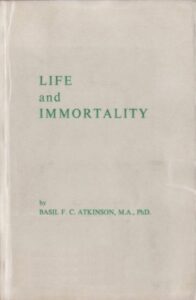
Basil Ferris Campbell Atkinson, Life and Immortality: An Examination of the Nature and Meaning of Life and Death as they are revealed in the Scriptures, E. Goodman & Son Ltd., The Phoenix Press, Taunton, England, 1969:
Psychee and Man
There are fourteen occurrences in the New Testament of the word psychee meaning a human being exactly in the same sense as the Hebrew nephesh, four of which are in quotations from the Old Testament. The first two, which appear in the same verse, are the most important and require special examination. In Matthew 10.28 we read, “And fear not them which kill the body, but are not able to kill the soul: but rather fear him which is able to destroy both soul and body in hell”. In this text we find the contrast between soul and body which sometimes occurs in the New Testament, though very seldom in the Old under the form of soul and flesh. Our text here taken in isolation is easily capable of implying the survival of the soul after the death of the body and our friends who believe that the soul survives normally take it in this sense. If there were any word in either Old or New Testament to connect survival or immortality with the soul, they would undoubtedly be right. But a careful study of the meaning of the word “soul” in the original language of the Old Testament, and also as we shall see of the New, shows that it is always connected with a human being who is alive on earth and that it dies or is destroyed when death comes to him in the way that is so familiar to our experience. When we bear this in mind, the meaning of the Lord’s words here becomes clear. To kill the body here means to take the present life on earth. But this does not kill the soul or person himself. It only puts him to sleep. He is finally destroyed in the second death, when his person or self is killed for ever. All will agree that destruction in hell is the second death, though we leave the discussion of its exact nature to our fourth section. Parallel to this verse is the Lord’s declaration that Jairus’ daughter was not dead but asleep (Matt. 9.24). She was actually dead (“kill the body”), but as she was going to wake up she could rightly be said to be asleep. In the same way all the dead will rise on the last day, so that as they now lie in their graves their souls, that is to say themselves, may rightly be said not to have been finally killed or destroyed The death which we all know is, as we have seen, the death of the soul, but is not final.
Further examples of psychee meaning “person” are found in Acts 2.41,43, in Acts 3.23 and 7.14, both in quotations from the Old Testament, in 1 Peter 3.20; 2 Peter 2.14; Romans 2.9; 13.1; 1 Corinthians 15.45 in a quotation from Genesis 2:7; Revelation 18.13 in a quotation from Ezekiel 27.13, and Revelation 20.4. The remaining case is Revelation 6.9, which needs special study. The souls spoken of here are often thought of as the disembodied spirits of the martyrs. A difficulty lies in their strange position underneath the altar and a great difficulty in the fact that they are heard crying for vengeance as if their whole character and principles had been changed by their death. These verses are all symbolic in keeping with the whole of the Apocalypse. The key to their meaning lies in Leviticus 17.14, where the soul is identified with the blood. The passage is parallel with Genesis 4.10, “the voice of thy brother’s blood crieth unto me from the ground”. The souls are the dead persons of the martyrs (see Numbers 5.2 and other passages in Numbers). The souls in Revelation 20.4 have also been occasionally taken to be disembodied spirits, but the word emphasises the opposite. The souls of the martyrs and the righteous are themselves restored in resurrection from the dust of death and it is the use of the word which brings out this fact and draws attention to it.
– pp. 12, 13.
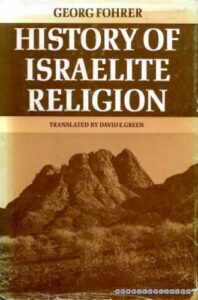
Georg Fohrer, History of Israelite Religion, Abingdon Press, 1972. (Originally published as Geschichte der Israelitischen Religion, Berlin, Germany).
The OT usually assumes that man is not completely annihilated after death, but continues in a certain sense to exist Naturally this existence should not be termed ‘Tife” in the full sense of the word, but more a kind of vegetating. The important point is that we are once again dealing with man as a whole, not with his “soul” or some other part of him. At his death, a shadow of his person becomes detached and continues to vegetate in the underworld. Its existence obviously depends on the corpse and, after its decomposition, on the bones. To a degree that cannot be defined more precisely, these constitute the concrete earthly base for the shadowy image. For this reason, cremation was unknown, and the burning of bones was considered sacrilege (Amos 2:1). The bones were therefore collected in a pit within the tombs, which were often used for many generations; later they were kept in ossuaries.
The grave, then, was of crucial importance for the fate of men after death: it was the repository for corpse and bones, the base on which the shadow rested. It is therefore incorrect to see either an evolution or a contradiction when both grave and underworld are mentioned. There is simply no evidence to support any development along the lines of single grave —many graves — large tomb—underworld. Neither is the juxtaposition of the grave as repository and place of union with one’s fathers, and the underworld as the “house appointed for all living” (Job. 30:23) an unresolved contradiction. The grave, rather, contains the base on which the shadow rests as it vegetates in the underworld.
This underworld is comparable neither to the Hades of the Greeks nor to hell and purgatory. The Hebrew term sheol probably means “non-land,” the realm in which there is nothing active and dynamic, the land that therefore “does not exist“ in the Israelite sense. It was conceived as an enclosed space within the abyssal ocean beneath the earth, or even beneath the waters (Job 26:5). The realm of total impotence, closed by barred gates (Isa. 38:10; Ps. 9:14 [Eng. 9:13]; Job 38:17), is entered by the shade that frees itself from the departed, there to lead the ghostly existence that traditionally typifies the fate of men after death. The term r’paim, “spirits of the dead,” which echoes the verb rapa, “grow weak,” “collapse,” is probably meant to characterize the total impotence of the shades.
– p. 219.
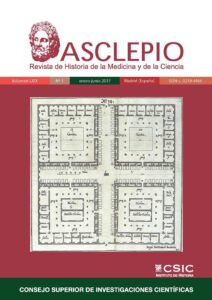
El Hombre y Su Cuerpo, Xavier Zubiri, Asclepio, 25, 1973, pp. 5-15. Asclepio es una revista electrónica en historia de la medicina. Publica artículos originales sobre historia de la ciencia, haciéndose eco de las diversas corrientes historiográficas de la disciplina (periodicidad semestral):
El hombre, pues, no “tiene” psique y organismo sino que “es” psico-orgánico, porque ni organismo ni psique tienen cada uno de por sí sustantividad ninguna; sólo la tiene el sistema. Pienso por esto que no se puede hablar de una psique sin organismo. Digamos, de paso, que cuando el cristianismo, por ejemplo, habla de supervivencia e inmortalidad, quien sobrevive y es inmortal no es el alma sino el hombre, esto es, la sustantividad humana entera.
– Reimpresión en Salesianum (Roma, Itália), 36, 1974, p. 481.
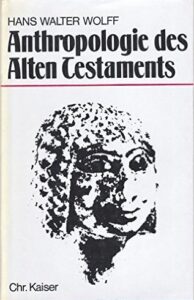
Hans Walter Wolff, Anthropologie des Alten Testaments [The Anthropology of the Old Testament], Gütersloher Verlagshaus Mohn, Gütersloh, Germany, 1973:
When the most frequent substantives are as a general rule translated by ‘heart’, ‘soul’, ‘flesh’, and ‘spirit’, misunderstandings arise which have importante consequences. These translations go back to the Septuagint, the ancient Greek translation, and they lead in the false direction of a dichotomic or trichotomic anthropology, in which body, soul and spirit are in opposition to one another. The question still has to be investigated of how, with the Greek language, a Greek philosophy has here supplanted Semitic biblical views, overwhelming them with foreign influence. Old Testament linguistic usage must be clarified at this point.
– p. 7
The traditional English Bible generally translates nepes, one of the basic words of Old Testament anthropology, as ‘soul’. In so doing it goes back, like the French âme and the German Seeley to the Greek Bible’s most frequent translation of nepes, psyche, and to the Latin Bible’s rendering, anima. nepes occurs 755 times in the Old Testament and on 600 occasions the Septuagint translates it by psyche.
… Yahweh God formed man of dust from the ground, and breathed into his nostrils the breath of life; and man became a living nepes.
“What does nephesh mean here [in Gen. 2:7] (which we shall from now on be referring to as n.)? Certainly not soul. n. was designed to be seen together with the whole form of man, and especially with his breath; moreover man does not have n., he is n., he lives as n.”
– p. 10
This use of nephesh in the legal precepts about the safeguarding of life corresponds to a usage that is very widespread linguistically. When anyone asks for his own or another man’s life, he asks for the nephesh (2Kings 1:13; Esth. 7:3; 1Kings 3:11); if he asks for death, he says, take my nephesh from me (Jonah 4:3; cf. 1Kings 19:4).”
… Rich and abundant though this use of nephesh for life is, we must not fail to observe that the nephesh is never given the meaning of an indestructible core of being, in contradistinction to the physical life, and even capable of living when cut off from that life. When there is mention of the ‘departing’ (Gen. 35:18) of the nephesh from a man, or of its ‘return’ (Lam. 1:11), the basic idea, as we saw on p. 13 above, is the concrete notion of the ceasing and restoration of the breathing. When Yahewh leads up the nephesh from the underworld (Ps. 30:3; 86:13), the idea is the return to healthy life of the whole man who has, through his illness, already been exposed to the power of death. Though much is said about nephesh as the life, any cult of life or death is lacking, and with it also every speculation about the fate of the ‘soul’ beyond the borders of life.
– p. 20
In the Yahwist’s account of the creation (Gen. 2.7) we saw man expressly defined as n. hayyä; he is so not simply on the basis of his creation out of the dust of the earth; he only becomes so because the God Yahweh breathes the breath of life into his nostrils. It is only the breath produced by the Creator that makes him a living n., which is to say, therefore, a living being, a living person, a living individual. It is under this aspect, then, that man is here more closely defined. According to the tendency of the statements in Gen.2.7, n. hayyä introduces no differentia specifica for animal life; then the subsequent definition in 2.19 of animal life as being n. hayyä as well would hardly be possible. But at the same time man is, through God’s endowment with the breath of life, distinguished as living individual from the n. met, as a lifeless structure or corpse.
– p. 22
[Quoted here from English version: The Anthropology of the Old Testament, SCM Press Ltd, London, England & Fortress Press, Philadelphia, USA, 1974].
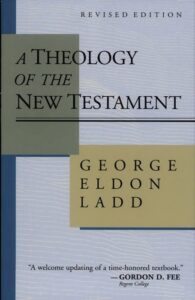
George Eldon Ladd, A Theology of the New Testament, Wm. B. Eerdmans Publishing Company, Grand Rapids, MI, USA, 1974. (This cover is from Revised Edition, 1993):
Jesus has almost nothing to say about Hades. The word occurs a few times (Mt. 11:23 = Lk. 16:19-31) as a well-known concept. In one parable Jesus draws upon contemporary ideas about Hades to set forth the danger people face if they refuse to hear the word of God. The parable of the rich man and Lazarus (Lk. 16:19-31) has often been taken as a didactic passage to teach explicitly the state of the dead. This, however, is very difficult, for if this is a didactic passage, it teaches something contrary to the rest of Jesus’ teaching, namely that wealth merits Hades and poverty itself is rewarded in Paradise. This parable is no commentary on contemporary social life, nor does it intend to give teaching about the afterlife. It is really not a parable about the rich man and Lazarus, but about the five brothers. Jesus used contemporary folk-material to set forth the single truth that if people do not hear the word of God, a miracle such as a resurrection would not convince them.
– pp. 194, 195.
In order to appreciate Pauline psychology, we need to have in mind the chief elements in the Greek and Hebrew concepts of man. One of the most influential thinkers for the subsequent history of Greek philosophy was Plato. Plato held to a dualism of two worlds, the noumenal and the phenomenal, and to an anthropological dualism of body-soul. The body was not ipso facto evil, but it was a burden and hindrance to the soul. The wise man cultivated the soul so that it might rise above the body and at death be freed from the body and escape to the world above. In Hellenistic times, the body, belonging to the world of matter, was thought to be ipso facto evil by the gnostics. Stacey has pointed out that most of the philosophers of Greece followed Plato in his view of soul and body, and that it was so impressed upon the civilized world that “no man can discuss the relation of soul and body today without encountering some resurgence of the Platonic view.” (D. Stacey, The Pauline View of Man, p.74. Stacey gives an excellent brief history of the Greeks’ view of man.).
The Hebrew view of man is very different from the Greek view. There is no trace of dualism. The Hebrew word for body occurs only fourteen times in the Old Testament and never stands in contrast to the soul (nephesh). More often, the word for flesh (basar) is used to designate the body (23 times). This word carries primarily a physical meaning. One significant usage is “flesh” as a symbol of human frailty in relation to God. Basar appears as something that men and animals possess in their weakness, which God does not possess. “My spirit shall not abide in man for ever, for he is flesh” (Gen. 6:3). “The Egyptians are men, and not God; and their horses are flesh, and not spirit” (Isa. 31:3). Basar refers to human beings in their frailty and transience, to man in his limitations, as distinct from the infinite God.
Soul (nephesh) is not a higher part of man standing over against his body but designates the vitality or life principle in man. God breathed into man’s nostrils the breath of life, and man became a living nephesh (Gen. 2:7). Body and the divine breath together make the vital, active nephesh. The word is then extended from the life principle to include the feelings, passions, will, and even the mentality of man. It then comes to be used as a synonym for man himself. Families were numbered as so many souls (Gen. 12:5; 46:27). Incorporeal life for the nephesh is never visualized. Death afflicted the nephesh (Num. 23:10) as well as the body.
A third term is spirit (ruach). The root meaning of the word is “air in motion,” and it is used of every kind of wind. The word is often used of God. God’s ruach is his breath — his power—working in the world (Isa. 40:7), creating and sustaining life (Ps. 33:6; 104:29-30). Man’s ruach — his breath — comes from God’s ruach (Isa. 42:5; Job 27:3). Thus man is conceived of as possessing ruach, inbreathed from God, as an element in his personality (Gen. 45:27; I Sam. 30:12; I Kings 10:5). God is the supreme spirit (Gen. 6:3; Isa. 31:3). Ruach in man is expanded to include the whole range of emotional and volitional life, thus overlapping with nephesh. The difference between nephesh and ruach in man is that nephesh designates man in relation to other men as man living the common life of men, while ruach is man in his relation to God. However, neither nephesh nor ruach is conceived of as a part of man capable of surviving the death of basar. They both designate man as a whole viewed from different perspectives.
– pp. 499-501.
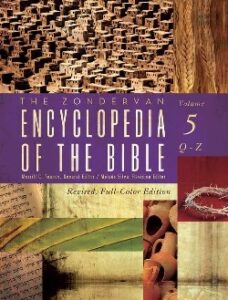
Merrill C. Tenney & Moisés Silva (eds.), The Zondervan Encyclopedia of the Bible, 1975:
b. Hebrew psychology: The Eng. tr. of נֶ֫פֶשׁ, H5883, by the term “soul” has too often been misunderstood as teaching a bipartite (soul and body: dichotomy) or tripartite (body, soul and spirit: trichotomy) anthropology. Equally misleading is the interpretation which too radically separates soul from body as in the Gr. view of human nature. Porteous states it well when he says, “The Hebrew could not conceive of a disembodied נֶ֫פֶשׁ, H5883, though he could use נֶ֫פֶשׁ, H5883, with or without the adjective ‘dead,’ for corpse (e.g., Lev 19:28; Num 6:6)” (ibid). Or as R. B. Laurin has suggested, “To the Hebrew, man was not a ‘body’ and a ‘soul,’ but rather a ‘body-soul,’ a unity of vital power” (cf. BDT, s.v.). The most significant text is Genesis 2:7, “then the Lord God formed man of dust from the ground, and breathed into his nostrils the breath of life; and man became a living being.” Here God creates man (נֶ֥פֶשׁ חַיָּֽה) by breathing into his nostrils the vital life-principle (נִשְׁמַ֣ת חַיִּ֑ים). The KJV rendering of the text is misleading, and the tr. “living being” seems more in line with the basic OT idea. It should be noted, however, that the Heb. phrase נֶ֣פֶשׁ חַיָּ֑ה occurs in Genesis 1:20, 21, 24, 30 as referring to other forms of life, but the intensive construction of Genesis 2:7 still places man in a unique position from the rest of creation, even though OT terminology lacks technical precision. For this reason, the RSV tr. makes a distinction between man as נֶ֣פֶשׁ חַיָּ֑ה, “living being,” and animals as נֶ֣פֶשׁ חַיָּ֑ה, “living creatures.” The point here is that Heb. psychology recognizes the profoundness of life; life is the mysterious reality which gives both man and animals being, but OT thought still underlines man’s distinctivenes. As such, נֶ֫פֶשׁ, H5883, can mean simply “life” as in Joshua 2:13; Judges 5:18; 2 Samuel 23:13-17; 1 Kings 19:4. Similarly the term may simply be the “self” as an expression of personality. Literally “my soul” (Gen 49:6; Num 23:10) may mean only “me”; “your soul” (Isa 43:4; 51:23) prob. means “you.” (Cf. Ps 25:13; 121:7.) The soul and its relationship to life are related to two other terms, “blood” and “spirit.” נֶ֫פֶשׁ, H5883, resides in the blood according to Genesis 9:4; Leviticus 17:11, 14; Deuteronomy 12:23. To describe the depths of man’s being as a feeling-thinking creature, the OT uses “spirit” and “heart” as synonyms for the soul as the seat of the appetites, emotions, desires, passions and intelligence. It may be possible to conceive of the “heart” (לֵב, H4213) as the cognitive, emotive faculty of man’s נֶ֫פֶשׁ, H5883; whereas the “spirit” (רוּחַ, H8120) refers to the creative “life-principle” of the נֶ֫פֶשׁ, H5883. Such distinctions are not consistently followed throughout the OT, and the generalized psychology of OT thought should prevent the student of the Bible from identifying Heb. psychology with any particular modern school of psychology. Biblical realism is concerned to describe man’s life in relationship to Yahweh not to provide esoteric speculation about the intrinsic nature of man and the world. (Cf. Gen 6:5, 6; 41:8; 42:21; 45:27; 49:6; Exod 4:14, 21; 35:21; Lev 19:17; 26:41; Num 5:14, 30; Deut 4:9, 29; 6:5; 10:12; 11:13, 18; 13:3, 6; 26:16; 30:2, 6, 10; 2 Sam 3:21; Job 7:11; Ps 77:3, 6; Prov 4:23; Lam 2:11; 3:20).
c. Death and the soul: The most perplexing problem of OT anthropology and psychology is the relationship of the soul to death and the afterlife. This problem centers not only on the nature of the soul, but on the meaning and significance of the term שְׁאﯴל, H8619. Genesis 35:18 and 1 Kings 17:21, 22 speak of the נֶ֫פֶשׁ, H5883, as departing and/or returning. However, the crucial series of texts are those in which the OT writers indicate a fear of death and a fear of the loss of the self or soul through the experience of death. (Cf. Job 33:18-30; Pss 16:10; 30:3; 116:8; Isa 38:15-17.) What is essential to understanding the Heb. mind is the recognition that man is a unit: body-soul! The soul is not, therefore, unaffected by the experience of death. OT eschatology does indeed contain seminal elements of hope implying the more positive teaching of the NT, as can be seen in the OT phrase “slept with his fathers” (1 Kings 2:10; 11:21), in David’s confident attitude toward the death of his child (2 Sam 12:12-23) and Job’s hope for a resurrection (Job 19:20-29). It is this essential soul-body oneness that provides the uniqueness of the Biblical concept of the resurrection of the body as distinguished from the Gr. idea of the immortality of the soul.”
– Quoted from Revised Edition, 2010, Vol. 5, pp. 586, 587.
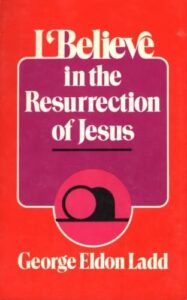
I Believe in the Resurrection of Jesus, George Eldon Ladd, Wm. B. Eerdmans Publishing Company, USA, 1975:
To understand the Old Testament hope, we must first of all understand the Old Testament concept of man. It stands in sharp contrast to the Greek view of man. One of the most influential Greek concepts of man stems from Platonic thought and has often had a strong influence on Christian theology. It is that man is a dualism of body and soul. The soul belongs to the real, permanent, noumenal (abstract thought) world; the body belongs to the visible, transitory, temporal, phenomenal world. The body is not thought to be ipso facto evil, as was the case in later Gnostic thought, but it is a hindrance to the cultivation of the mind and the soul. The wise man is he who learns how to discipline the body so that it is held in control and does not impair the cultivation of the soul. In this view, the soul is immortal, and “salvation” means the flight of the soul at death to escape the burden of the phenomenal world and find fulfillment in the world of eternal reality.
A verse in Paul, taken out of context, can be interpreted in this light. “We look not to the things that are seen but to the things that are unseen; for the things that are seen are transient, but the things that are unseen are eternal” (2 Cor. 4:18). This sounds like Platonic dualism; but in the context of Pauline thought, the eternal “things that are not seen” means the world of God which eventually will break into this world and transform it. This includes the resurrection of the body. Paul never conceives of the salvation of the soul apart from the body. Salvation means the redemption of the body and of the whole created order as well (Rom. 8:21-23).
Paul’s view is based upon the Old Testament view of man, in which man’s “soul” (nephesh) is primarily his vitality, his life — never a separate “part” of man. “Spirit” is first of all God’s spirit (ruach), his breath, his power (Isa. 31:3; 40:7) which created and sustains all living things (Ps. 33:6; 104:29-30). God’s spirit creates the human spirit (Zech. 12:1), but neither man’s soul nor spirit is viewed as an immortal part of man which survives death. Man’s death occurs when his spirit — his breath — is withdrawn (Ps. 104:29; Ecc. 12:7), and his soul — his nephesh — may be said to die (Num. 23:10, literally, “let my soul die the death of the righteous”; Jud. 16:30, “let my soul die with the Philistines”). In other places, the soul (nephesh) is said to depart to Sheol (Ps. 16:10, “For thou dost not give up my soul to Sheol”; cf. Ps. 30:3; 94:17). In these last references, nephesh is practically synonymous with the personal pronoun; there is no thought of an immortal soul existing after death. In sum, the Old Testament view of man is that he is an animated body rather than an incarnated soul. “Life” in the Old Testament is bodily existence in this world in fellowship with the living God (Deut. 30:15-20). “Death” means the end of life but not the cessation of existence. The dead exist in Sheol as “shades” (Prov. 9:18; Isa. 14:9; 26:19). A “shade” is not man’s soul or spirit; it is man himself, or rather a pale replica of a man. It is man stripped of his vitality and energy — a shadow of his earthly self. The evil thing about Sheol is that in death, man is cut oft from fellowship with God (Ps. 6:5; 88:10-12; 115:17).
– pp. 44-49.
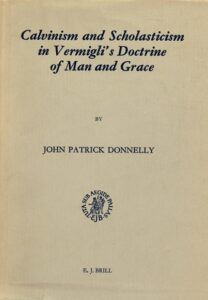
John Patrick Donnelly, Calvinism and Scholasticism in Vermigli’s Doctrine of Man and Grace, Leiden, E. J. Brill, 1976:
“Twentieth century biblical scholarship largely agrees that the ancient Jews had little explicit notion of a personal afterlife until very late in the Old Testament period. Immortality of the soul was a typically Greek philosophical notion quite foreign to the thought of ancient Semitic peoples. Only the latest stratum of the Old Testament asserts even the resurrection of the body, a view more congenial to Semites. As did Calvin, Martyr [Peter Martyr Vermigli] took upon himself a Herculean task in trying to uphold the immortality of the soul with a handful of vague New Testament texts (e. g. Luke, 23:43) against the defenders of soulsleep who had a plentiful supply of denials of immortality garnered from the early strata of the Old Testament.”
– pp. 99, 100.
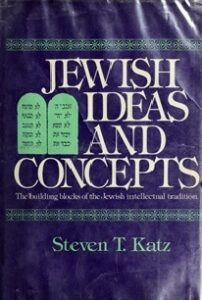
Steven T. Katz, Jewish Ideas & Concepts, Schocken Books, New York, USA, 1977:
Nature and Purpose of Man
… A helpful way to begin to gain some substantial appreciation of the biblical idea of man is to examine briefly the most importante terms used by the Scriptures to describe different aspects of his nature. First of all there is the term adam which the Bible usually employs as a collective term meaning “men,” “human beings” or “mankind” in distinction to other creatures or to God. Secondly, there is the term ish meaning “individual (man),” “male” or “husband” (and sometimes “servant” or “soldier”). Thirdly, we find the term enosh which is used mainly to denote the human race collectively or to indicate frailty or mortality, as opposed to the term gever, which is used to indicate a Strong man. Finally, we also find the term metim, which is used only in the plural and indicates “males” or “men” or “people.” From this variegated terminology we can see that the Bible suggests a complex image of man which recognizes and encompasses his activity as both an individual and a member of the human race, as a single person and as a member of a family, as both strong and weak (and this in both the physical and spiritual sense), and as both Lord and servant. In this way the biblical narrative does justice to the richness of human experience and also to the manifold and differing roles man is called upon to play in his concrete historical situation. The biblical authors thus avoid any simplistic rendering of the human situation or of man’s place in history and cosmos.
Further insight into the nature of man is furnished by certain terms that describe different aspects of the human personality. The term nefesh can denote the essence of any living creature and may even be equated with the life blood. It signifies the “individual,” “ego,” “person” and hence even at times the body (Exodus 21:23). Synonymous at times with nefesh but also distinguished from it is the term ru’ah, “spirit.” It represents the power and energy that come to man from without; it provides the impulse to higher life and finds expression in special skill, might, or leadership. The concept of neshamah, “breath,” is not only the vitalizing elemento breathed into man by God, but the divine spirit and lamp – the soul – within him. In contrast to these spiritual aspects of man, basar signifies his physical nature, the living body and, as such, it symbolizes human frailty, sensuality and mortality.
… This extensive nomenclature, though pointing to the complexity of the human personality, is not exhaustive. The complete picture of man’s nature as envisaged by the Bible can only be seen in the full context of scriptural evidence.
The key is to be found in the story of man’s origin. He is not a descendant of the gods (as in certain pagan mythologies); the term child(ren) used in Scripture with reference to man in relation to God (Deuteronomy 14:1; Psalm 2:7) has a metaphorical connotation. Nor is man the product (as some philosophical systems hold) of the blind forces of nature. He is the artifact of God, fashioned purposefully out of two diverse elements: his body is of the earth, but it is animated by the divine breath of life. Yet man is not a dichotomy of body and soul (a view characteristic of Orphism and Platonism), and certainly not a trichotomy of elements. His is a multifaceted unitary being – being nefesh hayyah, “a living person.” (Genesis 2:7).
– pages 99-102.
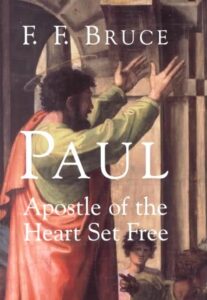
Paul, Apostle of the Heart Set Free, Frederick Fyvie Bruce, William B. Eerdmans Publishing Company, Grand Rapids, Michigan, USA, 1977:
Paul evidently could not contemplate immortality apart from resurrection; for him a body of some kind was essential to resurrection. Our traditional thinking about the `never-dying soul,’ which owes so much to our Greco-Roman heritage, makes it difficult to appreciate Paul’s point of view. Except when immortality is ascribed to God Himself in the New Testament, it is always of the resurrected body that it is predicated, never of the soul. It is no doubt, an over-simplification to say that while for the Greeks that man was an embodied soul, for the Hebrews he was an animated body; yet there is sufficient substance in this statement for us to say that in this as in other ways Paul was a Hebrew born and bred. For some, including several of his Corinthian converts, disengagement from the shackle of the body was a consummation devoutly wished; but if Paul longed to be delivered from the mortality of this present earthly “dwelling,” it was with a view of exchanging it for one that was immortal; to be without a body of any kind would be a form of spiritual nakedness or isolation from which his mind shrank.
– p. 311.
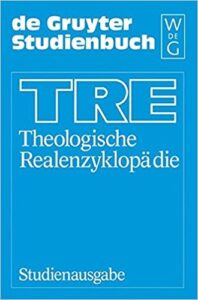
Theologische Realenzyklopädie, Walter de Gruyter GmbH & Co. KG, Deutschland, 1977-2004:
Die Rezeption des platonischen Theorems zur Unsterblichkeit der Seele durch Theologie und kirchliche Lehräußerungen sicherte ihm auch in der Geschichte des bisherigen Christentums einen überragenden Einfluss. Dieser ist auch heute noch so bedeutend, dass er für viele Menschen die biblische Hoffnung auf die Auferweckung des ganzen Menschen überlagert und sie die platonische Lehre mit dem Kern der christlichen Botschaft vom zukünftigen Leben verwechseln. Die Reformatoren erkannten allerdings, dass diese Lehre von der Unsterblichkeit philosophischen und nicht biblischen Ursprungs ist.
– Stichwort “Unsterblichkeit”.


Indian Journal of Theology 27.3-4, July-Dec. 1978. (Indian Journal of Theology [1952-2004] was a bi-annual scholarly journal published jointly by SeramporeCollege [Theology Department] and Bishop’s College, Calcutta, India – photos above).
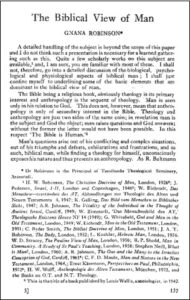
Gnana Robinson, The Biblical View of Man, (excerpts from pp. 137-149):
God created man as an unitary being; there is not in him a dichotomy of body and soul or a trichotomy of body, soul and spirit. He is not an incarnated soul, but an animated body or flesh. The anthropological terms used both in the Old and the New Testaments present the different aspects of man.
The word ‘adam (from ‘adamah – ground) refers to man as belonging to the human species; ‘ish refers to man as one endowed with power, perhaps the power of the will and choice; ‘anash (from ‘enosh – weak) stresses the feeble nature of man (Pss. 8:5; 90:3), geber points to man as one with manly vigour as against a woman (Exod. 10:11; 12:37; Josh. 7:14).
Several other words are used to refer to the constituent parts of the human faculty – soul(nepesh), flesh (basar), spirit (ruah), heart (leb/lebab). As seen above, basar represents man in his creaturely nature and more frequently it refers to the entire body (1 Kgs. 21:27; 2 Kgs. 6:30; etc.) or to mankind in general. Nepesh has been variously translated as soul, living being, life, self, person, desire, appetite, emotion and passion. It distinguishes man’s inner being from his external body or flesh. It is the seat of emotion and personal desires. Nepesh is not a soul which is imprisoned in a body, as later Greek thought took it, but it is the final result of the creative activity of God which is physical and spiritual at the same time. It is not that man has a soul, but man himself is a soul. It represents the whole man as a living being; in several places it means life (Exod. 4:19; 21:23; 1 Kgs. 19:2).
The word ruah (wind), when used of man, has a wide range of meanings, from ‘breath’ to ‘the spirit of prophecy’. It is the gift of God (Zech. 12:1, 10). It is that element in man which is most closely connected with the nature of God. When basar is animated by ruah it becomes nepesh, a living being (Gen. 2:7). The spirit creates life when it acts; the life reveals itself in various degrees of intensity according to the level the spirit is active in that man. Special gifts of the spirit are given to persons to fulfil extraordinary purposes (Jud. 13:20; 14:6; etc.). Man’s spirit is to be controlled by God.
Heart (leb) is the seat of will or the decision making faculty in man (2 Sam. 7:3; 1 Chron. 22:7; Ps. 20:5 [E.4]; Isa. 63:15). Associated with the heart are the kidneys (kilyoth) which have the thinking capacity (Pss. 7:10; 26:2; Jer. 11:20; 20:12). Some other internal organs of the body are also thought to be the seats of different feelings and emotions of man – bowels (me’im) – seat of sorrow and yearning (Isa. 16:11; 3:15; Jer. 31:20); liver (kabed) – seatof grief (Lam. 2:11); womb (rehem, rahamim) – seat of compassion or mercy (Jer. 31:20; Pss. 40:12
[E.11]; 103:4).Though different functions are ascribed to the different parts of the body, man is considered to be an unitary being. Though dualistic elements under Greek influence are found in some of the late writings of the Old Testament (Eccles. 3:21; 12:7), the main crux of Old Testament anthropology speaks of man as an unitary being. The idea that flesh is opposed to the spirit and is the cause of sin is foreign to the Old Testament. The body and the breath of life, both coming, as they do, from God, are not two elements that they may be isolated and treated separately. The divine life penetrates the total being to such a degree that each organ of the body can express the life of the whole. ‘Man is a psycho-physical being and psychical functions are bound so closely to his physical nature that they are all localised in bodily organs which themselves draw their life from the vital force that animates them.’ Man is, thus, body (flesh), spirit, soul, feeling, mind and heart. He is all these, yet none of these in particular if one tries to identify him with any single category. They are not contrasting elements, but different aspects of one vital personality. Whatever activity a man is engaged in, the predominant aspect, be it soul, heart, face or hand, represents the whole person and induces the other aspects.
This unitary nature of man is preserved in the New Testament as well. According to the Gospel writers, Jesus Christ is the true man whose unitary being is not destroyed even in death; St Paul, too, sees man as an unitary being. Though he uses some of the anthropological terms – soul (psyche), flesh (sarx), body (soma), spirit (pneuma), mind (nous) – common among the Greeks, he uses them more as a Jew with his Old Testament background. Flesh and body are not used in Paul in relation to matter and form as in Aristotelian philosophy. Nor is flesh or body seen as the prison for the soul or the spirit from whose bondage the latter has to be freed.
Soul is less frequent in the New Testament (13 times), compared with its frequency in the Old Testament (756 times). On the other hand, the word spirit is used here more often (146 times). There is no evidence in the New Testament for the pre-existence of soul. The New Testament uses soul in the Old Testament sense to designate man as a living being (Matt. 10:28; 16:26; Luke 9:56; 12:19f.; John 12:27). The existence of the soul without flesh or body is impossible.
With his theocentric faith, Paul sees man in his relation to God, and realises that the highest and best is derived from God. This is why spirit becomes central in his thinking. The word pneuma is used with different shades of meaning – Holy Spirit or the Spirit of Christ, the divine influence in the life of the believers, the seducing evil spirits, the spirit of bondage, the spirit in a Christian which holds communion with God (1 Cor. 2:11-12), a personal spirit, the natural possession in every man, which, of itself, is neither good nor bad (cf. 1 Cor. 2:11a) and which can be defiled (2 Cor. 7:1). The Spirit of God gives rise to a new spirit in man – the spirit of faith, of adoption, of prophecy etc. (Rom. 8:15; 1 Cor. 2:4; 2 Cor. 4:13; Eph. 1:17; 1 Cor. 4:21). The Spirit of God recreates the spirit of the natural man, so that the Christian posseses only one spirit, different in quality from that of an unbeliever or natural man. Paul’s pneumatic man never loses his own identity; he is never absorbed in the Spirit; he only shares in the fellowship of the Spirit. He is still human, and he shares human weakness, being liable to temptation (1 Cor. 3:1-4; Gal. 6:1). He remains still within the bonds of humanity. As E. Kasemann notes, ‘The terms used in Pauline anthropology all undoubtedly refer to the whole man in the varying bearings and capacities of his existence.’
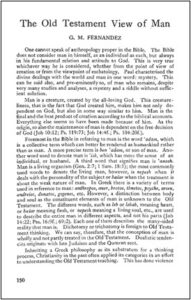
G. M. Fernandez, The Old Testament View of Man (excerpts from pp. 150-159):
One cannot speak of anthropology proper in the Bible. The Bible does not consider man in himself, as an individual as such, but always in his fundamental relation and attitude to God. This is very true whichever way he is considered, whether from the point of view of creation or from the viewpoint of eschatology. Paul characterised the divine dealings with the world and man in one word: mystery. This can be said also, and pre-eminently so, of man who remains, despite very many studies and analyses, a mystery and a riddle without sufficient solution.
Man is a creature, created by the all-loving God. This creatureliness, that is the fact that God created him, makes him not only dependent on God, but also in some way similar to him. Man is the final and the best product of creation according to the biblical accounts. Everything else seems to have been made because of him. As the origin, so also the maintenance of man is dependent on the free decision of God (Job 10:12; Ps. 119:73; Job 14:4f.; Ps. 104:20f.).
Foremost in the Bible in referring to man is the word ‘adam, which is a collective term which can better be rendered as humankind rather than as man. A more precise term is ben ‘adam, or son of man. Another word used to denote man is ‘ish, which has more the sense of an individual, or husband. A third word that signifies man is ‘anosh. Man is a living organism (Gen. 2:7; 1 Sam. 18:1); the most commonly used words to denote the living man, however, is nepesh when it deals with the personality of the subject or basar when the treatment is about the weak nature of man. In Greek there is a variety of terms used in reference to man: anthropos, aner, brotos, thnetos, psyche, arsen, andreios, dunatos, gegenes, etc. However, a distinction between body and soul as the constituent elements of man is unknown to the Old Testament. The different words, such as leb or lebab, meaning heart, or basar meaning flesh, or nepesh meaning a living soul, etc., are used to describe the entire man in different aspects, and not his parts (Job 14:22; Pss. 16:9f.; 69:2). Each one of them describes the many-sided real it; that man is. Dichotomy or trichotomy is foreign to Old Testament thinking. We can say, therefore, that the conception of man is wholly and not partly treated in the Old Testament. Dualistic tendencies originate with late Judaism and the Qumran sect.
Inheriting a Greek philosophy as its substratum for a thinking process, Christianity in the past often applied its categories in an effort to understanding the Old Testament teaching. This has done violence to the oriental thought pattern and injustice to the Jewish mentality. The Old Testament considers man in his relation to God. If man is the centre of dispute and discussion in Greek philosophy, the arena· of the Old Testament world is given over to God. It is God and not man who occupies the centre of the stage. Conveying and embodying in himself the collectivity of the human race, Adam and his relationships sum up in a microcosm the entire history of all humanity…
The future haunts the present. This is nowhere truer than in human life. The uncertainty of a tomorrow and the inevitable unknown plague the human imagination and shatter any human certainty. What is the future of man? What is going to happen to me tomorrow, when I am dead? This tantalizing question plagued Israel’s thinkers too. Belief in the afterlife is of a very late origin in Israel; in this they seem to have followed Canaanite and Mesopotamian beliefs rather than those of Egypt. Unlike the Egyptians, who believed in a continued but unchanged state of life after death, the Mesopotamians conceded that everything ended with death. Life is a preserve of the gods. Death is the common lot of man, which is to be met with stoic pessimism. Death is the end of life. There is a kind of food and drink that would grant man immortality; but these are jealously guarded by the gods. Death, like birth, is a natural necessity, devoid of any deeper or ulterior significance.
Israel shared this Mesopotamian concept of death. There was, however, this difference: in Mesopotamia man was mortal because the food and drink of immortality were kept away from him due to divine jealousy. Israel was convinced that man lost immortality through his own fault. Death is the limit of his horizon; there is no beyond. Nothing survives the grave. True, there is mention of a Sheol (Isa. 14; Job 10:21; 17:13-16; 3:17-19); but it is a vast tomb where the dead are stored up as inert matter. Death is the natural term of life. AII that the Israelite ever desired was a long life and a painless death. Only an early or a sudden or a painful death was looked upon as divine punishment. Otherwise death was viewed as a natural thing that put a full stop to everything. In a society where corporate personality was uppermost, where everyone believed that the father continued in his son, a specifically individual afterlife existence was not a necessity. Israel lived; the dying man was its member. As long, therefore, as Israel lived, the individual too lived. This thought is not altogether primitive or foreign. Even today parents want their children to be better off than they are financially, educationally and in any other way possible. It is the fundamental belief of their ego being continued in their children that is uppermost in this behaviour. Collective immortality, therefore, is not simply superstitious or primitive. The Psalms offer a special problem. Some of them seem to believe in an afterlife of some kind. Sometimes the enemy that is spoken of, and whom the psalmist opposes, is death (Pss. 7:6; 13: 3; 18 :4). Psalms 49 and 73 offer a vague and still unclear picture of some kind of life after death. The clear expression of a hope of resurrection occurs in Daniel 12:2 in the Maccabean period. How this idea developed in Israel we have no inkling.
We mentioned earlier that there is mention of Sheol in the Old Testament. However, it should not be concluded that Sheol is the place of afterlife. Sheol knows no retribution. A man’s recompense or punishment for his good or evil ways are to be seen in this life, either in his own personal life, or in that of his posterity. The wicked are punished so that their names are blotted out altogether (Sir. 23:24-27; 41:5-11). A good reputation and worthy children follow the good deeds of a man (Sir. 30:4-6; 37:24-26; 41 :11-13; 44:10-15). Sheol has a kind of suspended existence. Even when Sheol is referred to as a place of rest (Sir. 22:11; 38:23; 30:17 uncertain text), it is not conceived in any positive sense. Man in the Old Testament view is a creature. He has no autonomous character. Considered in himself he has no worth. Man’s only worth is that he is God’s gift. He is given ‘glory’ and ‘honour’; he is endowed with royal blessings (Ps. 8) and his status itself is a little less than divine. Man shares in the dignity of work which is a divine attribute (cf. Gen. 1 :28; 2:15; Ps. 104: 23). However, man is like the grass that withers away (Isa. 40:6-8). He is dust (Ps. 103:13-16) and ashes (Gen. 18:27). Nevertheless, the most tragic characteristic of man is that he is sinful. Wishing to assert his own autonomy at the expense of God, he sins. This is the lesson the author teaches by introducing the stories of Adam and Eve, Cain and Abel, Lamech, the Tower of Babel and the Flood. Man is corrupt from birth (Ps. 51 :5; 143 :2) and his thoughts are evil from his youth…
If creation brings a being into somethingness out of nothingness, it is promise that makes it capable of admitting to itself and experiencing within and without itself that the efficacious mainstay of its existence is the promise of God. The personal relationship God offers to man is only a part of God’s self-gift which is his promise. Human response to the divine promises can and should be one of hope and absolute trust. The life of Israel shows that her· entire history is a story of dependence on God with absolute trust on the fidelity of God and his promise. The people themselves were conceived because of a promise. Her own existence was conditioned by the continued and repeated promises of Yahweh.
The Old Testament concept of man is further and fully developed in the New Testament. If it is generally true to say that almost all the themes of the Old Testament are developed in the New, concerning man it is particularly true. Christianity is convinced that the first man was not Adam but Christ. Man apart from a consideration of Christ is but a scarecrow and a caricature. This is the summary result of the Old Testament considerations about man. The emerging picture is not very promising. This picture becomes increasingly irritating and frighteningly and frightfully frustrating, when we compare it with the glory that is Christ. This we leave for another paper to consider. If man is hungry and thirsty for the absolute, this is very true of Old Testament anthropology. The whole of Old Testament history shows the ever present invitation of God to men to be his own children, and the dismal human failure to respond to that call. Objectively viewed, there is not a single figure in the Old Testament that fully filled the divine expectations. Hence the idea of man, as it passes from the Old to the New Testament, undergoes not only a development but a radical rethinking because Jesus the man was a radical rethinking of God. If the Old Testament is a promise of God to man, then Christ is the promise of humankind to its God. If the Old Testament is the history of a human ‘no’ to the divine ‘yes’, then the New Testament is the human ‘yes’ to the divine ‘yes’; this is possible only through the man Jesus of Nazareth, the New Man.
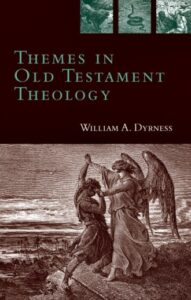
William A. Dyrness, Themes in Old Testament Theology, Inter-Varsity Christian Fellowship, USA, 1979 (Spanish: Temas de la Teologia del Antiguo Testamento, translated by Agustín S. Contin, Editorial Vida, Miami, Florida, USA, 1989):
La muerte y la vida futura
Nuestros comentarios sobre la esperanza profética han demostrado que la esperanza del Antiguo Testamento era de índole colectiva. Lo mismo es cierto cuando volvemos nuestra atención a la visión de la vida en el más allá: la inmortalidad es primeramente del grupo y luego del individuo. Sólo cuando una persona se encuentra dentro del pueblo de Dios puede tener la seguridad de la vida eterna.
1. La muerte y el Seol. Todos los pueblos del mundo comprenden que la muerte es el final natural de la vida en la tierra. Según lo dice el Gilgamesh Epic:
Cuando los dioses crearon al hombre, le repartieron la muerte. La vida la conservaron en sus propias manos.
Sin embargo, en el Antiguo Testamento, la muerte se relaciona con el pecado, y esto refleja algo desnaturalizado del mundo tal y como existe, algo sobre lo que sólo Dios puede triunfar.
También los hebreos entendían que el morir era algo natural. Los cuerpos hechos como los nuestros deben morir un día “como la gavilla de trigo que se recoge a su tiempo” (Job 5:26). A veces se habla de la muerte simplemente como el fin (2 Samuel 14:14). La muerte es como agua derramada en el suelo; no puede volver a recogerse. Debemos volver al polvo, porque de éste fuimos tomados (Génesis 3:19). En este punto, los hebreos compartían un gran caudal de ideas sobre la muerte que eran comunes a todo el mundo semita. Mediante la observación simple se puede ver que la muerte puede ser falta de vigor (a veces, simplemente falta de aliento, Salmo 104:29) o reducción de la vitalidad física que nos hace pensar en dormir. “Alumbra mis ojos”, ruega el salmista, “para que no duerma de muerte” (Salmo 13:3). A pesar de que es natural, la muerte es algo tenebroso que la gente evita (Salmo 55:4). La vanidad melancólica de Eclesiastés reposa en el hecho de que todas las actividades concluyen en la tumba. Sólo los vivos tienen esperanza (Eclesiastés 9:4). En ninguna parte del Antiguo Testamento es simplemente la muerte la puerta al paraíso (Jacob, 299). Su carácter de enemigo resulta evidente en todas partes.
La muerte era, a la vez, un símbolo de la destrucción que el pecado trajo al mundo y una parte de la destrucción misma. En este sentido, la muerte no era una parte normal del mundo, sino algo ajeno a los propósitos de Dios. En realidad, en Génesis 2:17 se le promete al hombre que el día que coma del fruto del árbol prohibido, seguramente morirá, y Génesis 6:3 confirma que la impiedad del hombre está relacionada con ese fin. Inmediatamente antes de su entrada a Canaán, Moisés apremió al pueblo a que escogiera la vida o la muerte, tomando la decisión de obedecer los mandamientos de Jehová o volviéndose a servir a otros dioses (Deuteronomio 30:15-19). Por regla general, en el Antiguo Testamento no se hace ninguna distinción entre la muerte física y la espiritual; el hombre, en su conjunto, está sujeto a la muerte. Sin embargo, bajo el aspecto físico se encuentra la realidad más profunda de la muerte espiritual, una confirmación de la separación de Dios y del gozo de su presencia que se inició en las opciones de vivir. Así, Moisés pudo decir: “A los cielos y a la tierra llamo por testigos hoy contra vosotros, que os he puesto delante la vida y la muerte, la bendición y la maldición; escoge, pues, la vida, para que vivas tú y tu descendencia” (Deuteronomio 30:19). Aunque esto se refiere a la vida terrenal, es evidente que tiene también implicaciones para el más allá.
Los hebreos sabían que tenían que hacer esa elección porque comprendían que la vida y la muerte estaban bajo el control de Dios. Aunque el hombre podía escoger la vida, era Dios el que debía darla. Dios es el que mata y el que mantiene vivo (Deuteronomio 32:39). Es El quien hace descender al Seol y quien levanta (1 Samuel 2:6). Sin embargo, no hay nada en el Antiguo Testamento que lleve al fatalismo. Es Dios quien decide; pero el hombre debe escoger también. Además, el Dios que decide es personal y responde a las oraciones de los que se vuelven a El. Tal y como dice por boca del profeta Ezequiel: “Porque no quiero la muerte del que muere, dice Jehová el Señor; convertíos, pues, y viviréis” (18:32).
El lugar de los muertos en el Antiguo Testamento, el Seol, se representaba a menudo en términos visibles como una existencia sombría y carente de dinamismo. También a este respecto compartían los hebreos muchas de sus ideas con sus vecinos del Cercano Oriente. El Seol no se identifica con ningún lugar. En lugar de ello, se considera más bien como especie de existencia que, en el caso de los hebreos, es básicamente opuesta a Dios. El Seol es el sitio de supervivencia desnuda. Uno duerme con sus padres (Génesis 37:35 y 1 Reyes 2:10). Es un lugar donde la alabanza es imposible (Isaías 38:18 y Salmo 6:5). Está más allá del alcance de la tierra y sus instituciones; pero no está fuera del alcance de Dios (Salmo 139:7-12; Amós 9:2). Mientras que se trata de un sitio sin esperanzas desde el punto de vista humano, Dios puede rescatar del poder del Seol a quienes confían en El (Salmo 49:15).
Ahora bien, ¿cuál es el significado de la esperanza en que Dios no permitirá que su pueblo descienda al abismo? No hay convicción de que el alma sobreviva, a pesar de que el cuerpo muere. Edmond Jacob llega al extremo al decir: “No hay ningún texto bíblico que autorice afirmar que el ‘alma’ se separa del cuerpo en el momento de la muerte” (IDB, 1,803). No, tal y como lo observa Eichrodt, la esperanza israelita era demasiado completa para que pudiera tener una realización de cualquier índole en el campo del espíritu por sí solo. Exigía la renovación de la vida corporal y terrenal tal y como la conocía (Eíchrodt, 1, 491).
2. La resurrección del cuerpo y la esperanza de vida eterna. Las ideas de la vida eterna en el Antiguo Testamento han sido difíciles de evaluar. De modo tradicional, los eruditos han creído siempre que aunque los hebreos tenían cierto sentido vago de inmortalidad, no tenían ninguna idea clara de la resurrección. Recientemente, Mitchell Dahood utilizó paralelos ugaríticos en su estudio de los Salmos, para mostrar una esperanza mucho más llena de confianza en la resurrección y la inmortalidad. En el Salmo 16:10, 11 este autor cree que se vislumbra una suposición de Elías o Enoc (véase también Salmo 73:24 y 49:15), y traduce el Salmo 17:15b “en la resurrección”, en lugar de “despierte”. Considera que es “el sentido natural. .. cuando se compara con los pasajes escatológicos de Isaías XXVI 19 … y Daniel XII 2” (Dahood, 1, 99; véase también la página xxxvi, 91 y la obra de E. B. Smick en Payne, 1970, 10410). Esto nos lleva claramente en una dirección nueva que promete una comprensión más profunda del material del Antiguo Testamento. Desde luego, es característico de la fe del Antiguo Testamento que su deleite en Dios y su providencia es tan vigorosa que no acepta ninguna limitación temporal en absoluto. La comunión con Dios es tan real que trasciende la experiencia terrenal. De modo primario, vemos esto en tres temas separados que cobran fuerza en las páginas del Antiguo Testamento y conducen, casi de modo inevitable, a la doctrina de la resurrección del Nuevo Testamento. Sin embargo, para que esto quede bien claro, necesitamos el ejemplo concreto de nuestro precursor en la muerte y la resurrección, nuestro Señor Jesucristo.
a. Fundamentos teológicos. Aun cuando sería posible desarrollar en forma amplia los fundamentos teológicos de la vida eterna, es suficiente señalar que la visión que tiene el Antiguo Testamento de Dios mismo aseguraba la supervivencia de quienes confiaban en El. Esta creencia estaba enraizada en la convicción de que Dios es la única fuente de vida, que la da y la quita (Génesis 2:7 y Salmo 36:9). La vida le pertenece esencialmente a Dios y se deriva de El. “Contigo está el manantial de la vida”, dice el salmista (Salmo 36:9). Por consiguiente, cuando se encuentra a Dios y se comienza a compartir su vida, se adquiere un elemento indestructible. Esto se representa de muchos modos distintos en Salmos y Proverbios. Dios es una torre poderosa en la que los justos están a salvo (Proverbios 18:10); es una roca protectora e inamovible (Salmo 62; obsérvese en el versículo 2 que roca y salvación están en una construcción paralela) y es también una fortaleza (Salmo 46:1, 4). Así, aun cuando no hay nunca ninguna falsa ilusión respecto a la debilidad humana y su propensión a la muerte, existe una confianza firme en que Dios protegerá a todos los que confían en El. “Mi carne y mi corazón desfallecen, mas la roca de mi corazón y mi porción es Dios para siempre” (Salmo 73:26). Obsérvese el uso de para siempre. Esto quiere decir que su fuerza es tal que su protección no tiene límites. Debe tratarse simplemente de que el que teme a Jehová no verá el Seol (Salmo 16:10, 11). Esto no aparece en ninguna parte con mayor belleza que en el Salmo 23: “Jehová es mi pastor”. Aunque pasaré por valles reminiscentes de muerte, confiesa el salmista, he experimentado la maravillosa providencia de Dios a tal punto – mi mesa está bien surtida y mi copa rebosa -, que creo que la bondad y la misericordia me perseguirán; no puedo huir de eso (Dahood,1,148-49). El corolario simple es que moraré seguramente para siempre en la presencia de Dios (véase un paralelo en el Nuevo Testamento, en Juan 14:1-3).
b. Fundamentos éticos. La fuente del fundamento ético para la vida eterna es la idea de la retribución del Antiguo Testamento que vimos antes y que resulta especialmente evidente en los textos sobre la sabiduría. Hay cierta clase de fruto que se deriva de una vida de justicia o de maldad. El necio sigue un camino que conduce a la muerte, y el justo una senda que lleva a la vida (Proverbios 11:30). El juicio de Dios que es siempre justo provocará con toda seguridad un final recto. Recompensará al justo y castigará al impío. El hecho de que se dice que la vida es el fruto de una vida de justicia indica lo profundamente enraizada que está la idea de justicia. Era una especie de ley de la naturaleza. Esto se expresa en el Nuevo Testamento en las palabras de Pablo: “Lo que el hombre siembra, eso también segará” (Gálatas 6:7). Así, podía darse por sentado que Dios recompensaría a los justos con la vida. La verdad debe prevalecer debido al orden de las cosas. Es el sentido de retribución el que se encuentra tras el ruego de Job, de naturaleza sumamente profética: “¡Quién diese ahora que mis palabras fuesen escritas!”, clamaba. “Yo sé que mi Redentor vive y al fin se levantará sobre el polvo” (Job 19:23, 25). La palabra redentor, en este punto, se puede traducir también como “reivindicador”. Job sabía que, incluso después que su carne fuera destruida (versículo 26), la reivindicación de Dios lo preservaría. Es como si, por inspiración del Espíritu, fuera más allá de lo que sabía hasta una verdad que su experiencia con Dios hacía que fuera necesaria, la verdad de que la protección de su carne por Jehová, después de su muerte, sería una reivindicación del propio orden justo de Dios. En este punto, la fe del Antiguo Testamento llega hasta el umbral mismo de la revelación adicional de Dios en Cristo.
c. Fundamentos históricos y escatológicos. Ya hicimos hincapié antes en nuestro estudio en la cualidad “terrenal” de la fe de Israel. No tenían que especular respecto a cómo trataría Dios a su pueblo, porque tenían amplia oportunidad para poder apreciarlo con sus propios ojos. Habían visto que Jehová tornó a Abraham y llevó su semilla a la Tierra Prometida. Habían visto que Jehová los había liberado de la opresión: “Vosotros visteis lo que hice a los egipcios, y cómo os torné sobre alas de águilas, y os he traído a mí” (Exodo 19:4).
Todo esto les dio confianza en que Dios los liberaría también en el futuro. La experiencia que tenían del cuidado concreto y la providencia de Jehová les hizo creer naturalmente que Dios los preservaría. La palabra de Dios dada por mediación de sus profetas confirmó esta fe y les aseguró que, a pesar de todas las pruebas que pudiera haber de lo contrario, Dios le garantizaría a su pueblo una victoria final y definitiva. Además, tenían frente a ellos los ejemplos de Enoc y Elías, hombres que habían caminado con Dios y gozaban de su protección especial. Todo esto hacía que los hebreos, cuando reflexionaban en el futuro, creían que la victoria final de Dios incluiría seguramente el triunfo definitivo sobre la muerte. No tenían ninguna idea clara respecto a cómo haría Dios esto; pero no tenían ninguna duda de que lo haría. El ajuste final de cuentas, como lo hizo notar Isaías, incluirá la destrucción de la muerte para siempre (Isaías 25:8). En forma que se asocia a la venida de Miguel y la época de la tribulación, Daniel nos dice: “Muchos de los que duermen en el polvo de la tierra despertarán” (Daniel 12:2).
No se trata de negar la realidad ni el terror de la muerte, sino que, más bien, se trata de poner las cosas en perspectiva. Cuando se entiende plenamente el carácter de Dios, cuando se ve el modo en que funciona el orden moral del mundo, cuando uno ve a Dios liberar a su pueblo, se considera, después de todo, que la muerte es algo pequeño y débil, tal y como lo ve Dios. Cuando llegue la victoria final, no hay duda alguna de que la muerte misma se desplomará. Sin embargo, también en este caso, el Antiguo Testamento parece estar sobreaviso; busca un complemento y una encarnación de todo lo que sabe con toda certidumbre que es la verdad. Esta encarnación es la nueva creación que Cristo vino a revelar. La verdad que sólo conocían en parte, Cristo vino a aclarárnosla todavía más: que por su muerte y resurrección podemos ser su pueblo, y El nuestro Dios, para siempre.
– pp. 185-190 (from Spanish edition).
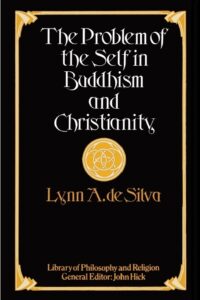
Lynn A. De Silva, The Problem of the Self in Buddhism and Christianity, Palgrave Macmillan, London (England) and New York (USA), 1979:
There are however a few instances [in the Bible] which seem to suggest a dichotomy or thichotomy. In this connection the verse most often quoted is Mat. 10:28, where Jesus says: ‘Do not fear those who kill the body; rather fear him who can destroy both body and soul in hell.’ Oscar Cullmman’s comment on this verse is as follows:
It might seem to presuppose the view that the soul has no need of the body, but the context of the passage shows that this is not the case. Jesus does not continue: ‘Be afraid of him who kills the soul’; rather: ‘Fear him who can slay both soul and body in Gehenna.’ That is, fear God, who is able to give completely to death; to wit, when He does not resurrect you to life. We shall see, it is true, that the soul is the starting-point of the resurrection, since, as we have said, it can already be possessed by the Holy Spirit in a way quite different from the body. The Holy Spirit already lives in our inner man. ‘By the Holy Spirit who dwells in you (already)’, says Paul in Romans 8:11, ‘God will also quicken your mortal bodies.’ Therefore, those who kill only the body are not to be feared. It can be raised from the dead. Moreover, it must be raised. The soul cannot always remain without a body. And on the other side we hear in Jesus’ saying in Matthew 10:28 that the soul can be killed. The soul is not immortal. There must be resurrection for both; for since the Fall the whole man is ‘sown corruptible’.
Referring to this verse J. Barr says:
This is hardly a statement of the natural immortality of the disembodied soul, but means rather the life of the self is a matter between man and God or man and devil.
1 Thessalonians 5:23 is another verse often quoted in this connection: ‘May your spirit and soul and body be preserved entire, without blame, at the coming of the Lord Jesus Christ.’ W. D. Stacey comments on this verse as follows:
The words holoteles and holokleros point to the real meaning. Paul is emphasizing the entirety of the preservation. The whole man is preserved, and spirit, and soul, and body, simply underline the inclusiveness of the conception. Man in every aspect, man in his wholeness, is to be preserved.
Revelation 6:9 (cf. 20:4) also needs to be looked at. ‘And when he had opened the fifth seal, I saw under the altar the souls of them that were slain for the word of God, and for the testimony which they held.’ This picture is taken directly form the sacrificial ritual of the Temple where the blood of the sacrificial animal was offered at the foot of the altar. So the souls of the martyrs ‘beneath the altar’ (mark the phrase) means the life-blood of the martyrs which has been poured out as an offering and a sacrifice to God. It was the Hebrew belief that life was in the blood, so that Deuteronomy 12:23 and Leviticus 17:14 say that ‘blood is the soul.’ In this light the ‘souls of the martyrs’ means their life-blood shed at the altar.
– pp. 82, 83.
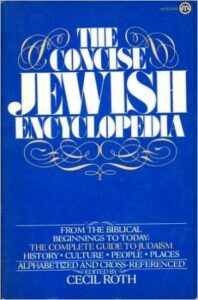
The Concise Jewish Encyclopedia, Cecil Roth, New American Library, 1980:
immortality of the soul: The Bible does not state a doctrine of the immortality of the soul, nor does this clearly emerge in early rabbinical literature. Opinions differed as to whether the concept of the World to Come implied immortality of the soul, while there was also confusion with regard to the relation to the Resurrection of the Dead. Maimonides came under criticism for minimizing the significance of resurrection and stressing the doctrine of the immortality of the soul. Eventually the belief that some part of the human personality it eternal and indestructible became part of the rabbinical creed and was almost universally accepted in later Judaism. It wal also accepted by medieval and later Jewish philosophers. The kabbalists believed in the immortality of the soul, although they connected it with the doctrine of metempsychosis. The traditional belief that evolved was in a hereafter where departed souls are rewarded and the wicked punished for their deeds in this world, until the time of Resurrection and Last Judgment, which will inaugurate a completely new era. Reform Judaism generally denies belief in Resurrection but accepts immortality of the soul.
resurrection (tehiyyat hametim): The teaching that at some future period the bodies of the dead will be revived. Among Jews, such a belief began to develop toward the end of the biblical period, possibly under Persian influence. By the end of the Second Temple period it had become a basic belief among the Pharisees (but not among the Sadducees). The rabbis often connected r. with the messianic era, and Maimonides incorporated it as one of the Thirteen Principles of Faith, although his various pronouncements on the subject are ambivalent. Most Orthodox thinkers took it literally, but Reform Judaism has denied the literal interpretation and revised the liturgy accordingly. Other circles have tended to identify it with the immortality of the soul.
– pp. 257, 258, 450, 451 (Entries “immortality of the soul” and “resurrection”).
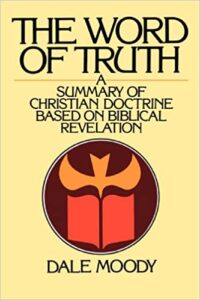
Dale Moody, The Word of Truth – A Summary of Christian Doctrine Based on Biblical Revelation, W. B. Eeedmans Publishing Company, Grand Rapids, MI, USA, 1981.
The particularity of soul and body is his second subordinate problem. No objection is made to the claim that whatever has life is soul. The Bible goes beyond Barth’s preoccupation with animals and includes fish and fowl! There is no objection to his emphasis on man as a percipient and partner of God. This, as far as we know, does indeed distinguish man from animals. At times the human spirit as human transcendence of the physical organism is the terminology I would use for man’s capacity to perceive God and be a partner with God, but the major objection to Barth’s view of man as the soul of the body is what sounds like a dualism that is never clearly overcome. He steadfastly protests that he is speaking only of two moments, not two substances, and that there is no partition, but his insistence on “ineffaceable difference” betwen soul and body is difficult to harmonize with “inseparable unity.” He is still struggling at the end when he says: “That man as the soul of his body is the secondary fact which is no less indispensable to real man than the first, namely, that he is the soul of his body.” It seems more biblical to say that man is a living soul who has a created human body and a created human spirit living in unity until death separates them.
When Barth comes to interpret the last phrase in his statement, “indestructible order,” we come upon a genuine surprise. At the beginning of his discussion of soul and body he does not hesitate to use such terms as dualism and antithesis, but now he puts the emphasis on the unity and even identity of soul and body in his description of man as “a natural being” (Vernunftwesen). Soul without body and body without soul are dismissed as spiritualism and materialism, for man “can in no case understand himself as a dual but only as a single subject, as soul identical with his body and as body identical with his soul. He seems to return to his Christological analogy in which soul and body may be compared to the unity of deity and humanity in the person of the one Jesus. This whole is, as he has labored to say consistently, the unity of Holy Spirit – soul-body. This is his theological anthropology, the only true anthropology, which allows no room for a technological anthropology or any other anthropology that neglects man’s orientation toward God. At once this is Barth’s strength – and his weakness! Any challenge of Barth must be biblical, for he accepts no other guide. That is why his identification of human spirit and Holy Spirit and related points are rejected.
Some conservative Calvinists today have rejected Platonic dualism in no uncertain terms. This is especially true of the theology of the Dutch Calvinist G. C. Berkouwer. At three special points he reviews the views of the soul in historical theology with his typical thoroughness, but his own views become clear also.
Berkouwer has a long chapter on the meaning of the soul called “The Whole Man.” Here he denounces the theory of a “substantial dichotomy” between an immortal soul and a mortal body. Berkouwer rightly argues that the soul is not some “part” of man not subject to death but the whole man subject to the judgment of God and to the redemption made possible by the whole man Jesus Christ. This view, which seems thoroughly biblical, requires a complete rethinking not only of traditional Catholicism but of much Protestantism also. This applies not only to conservative Protestantism before Kant but to the liberalism built on Kantian idealism.
The meaning of the soul rests upon the nature of the soul. Berkouwer’s critique of belief in the natural immortality of the soul is as significant as it is Scriptural. At times he argues that “creedal caution” is better than dogmatic theology, but his main thrust is against the theory of belief in an immortal soul independent of God. Only God is by nature immortal, and man’s immortality is a gift received in dependence upon the immortal God.
The crucial point for conservative theology is the origin of the soul. In reaction against the theory of evolution, Pope Pius XII, on August 12, 1950, in the encyclical Humani Generis, denounced any denial of the historical Adam from whom original sin comes and affirmed the immediate creation of individual souls for each human-body. The natural body comes through procreation, but the immortal soul comes through direct creation. This was only making dogma out of dualistic doctrine long taught.
Calvinism has of course been free to appeal to Scripture over all dogmas and creeds, but the theory of creationism has often been expounded by Calvinists in agreement with Catholics. Lutherans have been more inclined toward the traducianism that goes back to Tertullian. Berkouwer believes that the long debate between creationism and traducianism has for the most part been “an unfruitful controversy,” because both argue on the basis of the belief that the soul is a spiritual substance separate from the body. At only one point does Berkouwer hold back from saying what needs to be said against the traditional view of the soul. It is not enough to reject the theory of the substantial dichotomy of body and soul, or of the substantial trichotomy of body, soul and spirit. It is necessary to say that the dualism of either creation or evolution must go too, and creative evolution must be put in the center. God is at work in the whole process of the whole man, for there is no point at which man is independent of God. Berkouwer needs only to follow through to the logical conclusion of his argument.
– pp. 181-183.
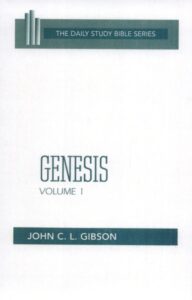
John C. L. Gibson, Genesis – Volume I, Westminster John Knox Press, Louisville, Kentucky, USA, 1981:
The word translated “being” in the RSV is in Hebrew nephesh. The AV has “soul”, which the RSV wisely avoids because it might have made its modern readers think about the “immortality” of the soul. This is not a Hebrew but a Greek idea. In Hebrew the “soul” is not a part of man but the whole living person, consisting, as this verse makes clear, of his body plus the breath which gives it life. When the Psalmist says “God will ransom my soul from the power of Sheol” (Ps.49:15), he is not therefore to be understood as looking forward to the survival of his soul after death. He is simply expressing his confidence that God will not let him die. And when he says “Bless the lord, O my soul” (Ps.103:1,2,22; Ps.104:1,35), he means simply that he wants to sing to God with his whole being (compare Ps.104:33).
The naiveté of this picture of God forming ‘man’ like a potter should not be allowed to blind us to its essential meaning. This is that we and all human beings derive our lives directly from him. Without the breath that he puts into us we are dead and our bodies dissolve into the dust from which they came. As Ecclesiastes says (12:7), “the dust returns to the earth as it was, and the spirit (or better, breath) returns to God who gave it.” Or as the author of this story later has God saying, “you are dust, and to dust you shall return” (3:19). These quotations show that the origin of every human could to the Hebrews be described in the same pictorial language.
This lesson of man’s utter creatureliness is even more starkly present in the Hebrew of this verse than it is in English. For the Hebrew word for “man” is adam and the Hebrew word for “ground” is adamah. The two words have no etymological connection with each other, but they were so close in sound that the author could not resist the play. Nor could he in the verses that follow resist rubbing in the lesson wherever he could by constantly using the word “ground”. We have it throughout this story -– see 2:9, 19; 3:17, 19, 23 –- and we have it throughout the next story of Cain and Abel for which he was also responsible — see 4:2,3, 10-12,14.
How different all this is from the Greek view that a person’s material body may perish but that his or her “soul” will live for ever! That view only became familiar to Judaism and Christianity when in later centuries they moved into the Greek-speaking world, and it has caused untold theological damage ever since. In Hebrew thinking there is nothing of eternal Worth in human beings as such and they can only come into contact with eternity when they relate themselves humbly and in obedience to God, their Creator (see further the commentary on 1:26-31, “Man” – the creature of God).”
Can we have any doubt which view is the more realistic?
– pp. 103, 104.
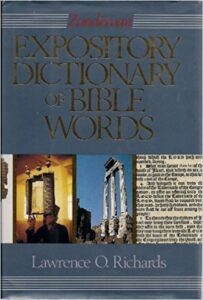
Lawrence O. Richards, Expository Dictionary of Bible Words, Zondervan Publishing House, Grand Rapids, MI, USA, 1985. (This cover is from 1991 Edition.):
‘Soul’ in the OT, then, does not indicate some immaterial part of human beings that continues after death. Nepeš essentially means life as it is uniquely experienced by personal beings…
– 1991 Edition, p. 576.
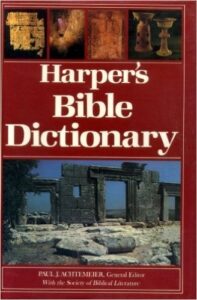
Paul J. Achtemeier, Harper, & Row (Publishers), Harper’s Bible Dictionary, USA, 1985:
“For a Hebrew, ‘soul’ indicated the unity of a human person; Hebrews were living bodies, they did not have bodies. This Hebrew field of meaning is breached in the Wisdom of Solomon by explicit introduction of Greek ideas of soul. A dualism of soul and body is present: ‘a perishable body weighs down the soul’ (9:15). This perishable body is opposed by an immortal soul (3:1-3). Such dualism might imply that soul is superior to body. In the NT, ‘soul’ retains its basic Hebrew field of meaning. Soul refers to one’s life: Herod sought Jesus’ soul (Matt. 2:20); one might save a soul or take it (Mark 3:4). Death occurs when God ‘requires your soul’ (Luke 12:20). ‘Soul’ may refer to the whole person, the self: ‘three thousand souls’ were converted in Acts 2:41 (see Acts 3:23). Although the Greek idea of an immortal soul different in kind from the mortal body is not evident, ‘soul’ denotes the existence of a person after death (see Luke 9:25; 12:4; 21:19); yet Greek influence may be found in 1 Peter’s remark about ‘the salvation of souls’ (1:9). A moderate dualism exists in the contrast of spirit with body and even soul, where ‘soul’ means life that is not yet caught up in grace. See also Flesh and Spirit; Human Being.”
– pp. 982, 983.
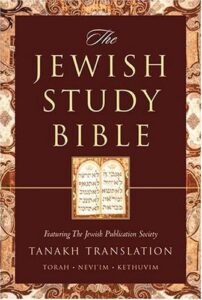
The Jewish Study Bible, Adele Berlin and Marc Zvi Brettler (eds.), Jewish Publication Society, USA, 1985 (this cover and quotation come from 2004 edition, Oxford University Press, New York, USA):
Here [in Genesis 2:7], man has a lowlier origin than in the parallel in 1.26-28. He is created not in the image of God but from the dust of the earth. But he also has a closer and more intimate relationship with his Creator, who blows the breath of life into him, transforming that lowly, earth-bound creature into a living being. In this understanding, the human being is not an amalgam of perishable body and immortal soul, but a psychophysical unity who depends on God for life itself.
– p. 15.
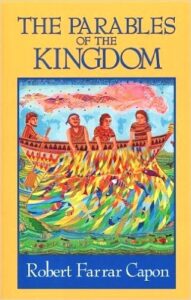
The Parables of the Kingdom, Robert Farrar Capon, Zondervan Corporation, Grand Rapids, MI, USA, 1985:
“Perhaps the biggest obstacle to our seeing the judgment of Jesus as the grand sacrament of vindication is our unfortunate preoccupation with the notion of the immortality of the soul. The doctrine is a piece of non-Hebraic philosophical baggage with which we have been stuck ever since the church got into the wide world of Greek thought. Alone with the concomitant idea of [immediate] ‘life after death ,’ it has given us almost nothing but trouble: both concepts militate against a serious acceptance of the resurrection of the dead that is the sole basis of judgment.”
– p. 71.
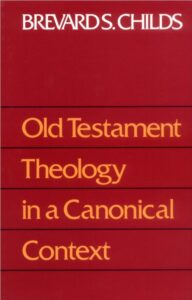
Brevard Spring Childs, Old Testament Theology in a Canonical Context, Philadelphia, USA: Fortress, 1985 (This cover is from 1989 edition),
It has long been noticed that according to the Old Testament man does not have a soul, but is a soul (Gen. 2:7). That is to say, he is a complete entity and not a composite of parts from body, soul and spirit. Yet it is also true that the Old Testament views man from different holistic perspectives. He can be described in terms of his will, or his emotions, or his physical prowess.
– p. 199.
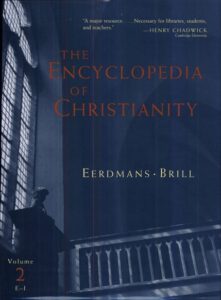
Evangelisches Kirchenlexikon, E. Fahlbusch, J. M. Lochman, J. Mbiti, J. Pelikan, Lukas Vischer, G. W. Bromiley and D. Barret, Göttingen, Germany, 1986. (Translated into English as Encyclopedia of Christianity, Wm. B. Eerdmans Publishing Company, 2001):
All Christians believe in immortality, understood as a final resurrection to everlasting life. The majority have held that immortality also includes continuing existence of the soul or person between death and resurrection. Almost every detail of this general confession and its biblical basis, however, has been disputed.
The debate has been fueled by the development of beliefs about the afterlife within the Bible itself and the variety of language in which they are expressed. The Hebrew Bible does not present the human soul (nepeš) or spirit (rûah) as an immortal substance, and for the most part it envisions the dead as ghosts in Sheol, the dark, sleepy underworld. Nevertheless it expresses hope beyond death (see Pss. 23 and 49:15) and eventually asserts physical resurrection (see Isa. 26:19; Dan. 12:2).
Intertestamental Judaism includes several accounts. The Sadducees emphasized the dissipation of life in Sheol and sometimes adopted Greek materialism, which denied the afterlife altogether. Others, such as Philo, were strongly influenced by Plato and stressed the immortality of the soul rather than physical bodily resurrection. The Pharisees embraced both, the Sheol and the resurrection texts of the OT, affirming an intermediate state, a future bodily resurrection at the coming of the Messiah, and immortality in his kingdom.
The NT develops a position most like the Pharisees (see Acts 23:6–8). While its greatest stress is on the resurrection of the body, which is explicitly identified as “immortal” (see 1 Cor. 15:53–54), it also envisions personal communion with Christ immediately upon death (Luke 23:43, 46; 2 Cor. 5:1–10; Phil. 1:20–24). It uses “soul” (psychē) and “spirit” (pneuma) in largely synonymous, nontechnical senses and does not explicitly describe either as “immortal.” On the basis of this reading of Scripture, most Christians have understood immortality as “everlasting life,” a gift of God to the individual believer that is given already in this life (John 6:47), continues after death in an “intermediate state” until bodily resurrection, and endures forever with God in his eternal kingdom, the new heaven and new earth. The other minority view is implicitly materialistic. It is found mainly among 16th‐century → Anabaptists and later sects, such as Seventh‐day → Adventists. Held in England by Thomas Hobbes and John Milton, it has gained popularity among intellectuals in the 20th century. It holds that a person cannot exist without a body and denies the immortality of the soul. It thus rules out the intermediate state, although it may speak of “soul sleep,” and affirms only the resurrection of the body to immortality at Christ’s second coming. It denies that the OT envisions an afterlife and that the NT teaches an intermediate state. It believes that the majority Christian view results mainly from Platonism, not the Bible. Both the Platonist and materialist minorities agree with the majority that the resurrection will occur at Christ’s return.
In contrast, spiritists, appealing to parapsychological phenomena and near-death experiences, have continued to assert immortality understood literally as personal survival of death.
Christians who find moderns idealism, romanticism, naturalism, – spiritism, or reincarnation more compelling than the traditional biblical worldview often replace the historic Christian view of immortality or attempt to harmonize it with another notion. However, the majority view of the Christian tradition – that personal immortality is a gift of God in Christ already in this life, continues between death and resurrection, and is completed with the resurrection of the body to life in God’s everlasting kingdom – remains the teaching of most churches, and the belief of most Christians worldwide, whether Orthodox, Roman Caholic (see Catechism of the Catholic Church [1994]), or traditional Protestant.
– English Edition, Vol. 2, excerpts from pp. 668-670.
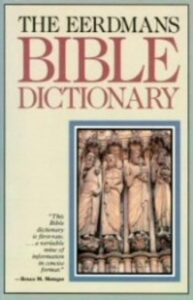
Allen C. Myers, John W. Simpson, Jr., Philip A. Frank, Timothy P. Jenney and Ralph W. Vunderink (eds.), The Eerdmans Bible Dictionary, Grand Rapids, MI, USA, 1987:
“Indeed, the salvation of the “immortal soul” has sometimes been a commonplace in preaching, but it is fundamentally unbiblical. Biblical anthropology is not dualistic but monistic: human being consists in the integrated wholeness of body and soul, and the Bible never contemplates the disembodied existence of the soul in bliss.”
– p. 518.
SOUL. The usual translation of Heb. nep̱eš and Gk. psychḗ (though most translations retain considerable freedom in their renderings of these terms). As with other terms such as “body,” “heart,” and “spirit,” “soul” does not designate a part of a human being, but rather the whole person considered from one particular aspect of its functioning. As such, it represents primarily the life force of the body (cf. Gen. 2:7) or the inner life of the person, encompassing desires and emotions.
– p. 964.
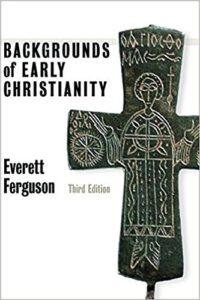
Everett Ferguson, Backgrounds of Early Christianity, Wm. B. Eerdmans Publishing, Grand Rapids, Michigan, USA, 1987 (This cover is from 2003 edition):
For Plato the soul is immortal, possessing both preexistence and continued postexistence. The Phaedo, set as a conversation between Socrates and his friends in his last hours, is an argument for the immortality of the soul. By definition the soul is life (psyche), and life is antithetical to death. The soul, therefore, does not die but survives the body. Plato draws on the older ideas of transmigration, rewards, and punishment. The real self possesses something divine. The home of the soul is not earth but the sphere of the planets. Plato’s immortality of the soul is a natural immortality, something that is true of the soul by reason of its very nature. This philosophical doctrine of the immortality of the soul is to be distinguished from the Jewish and Christian doctrine of a resurrection of the body and from the patristic doctrine of a created or a conditional immortality of the soul dependent on the Grace and Power of God.
Plato’s theory of knowledge (epistemology) is related to his view of the soul. Knowledge is recollection. Persons can have concepts only because they had them previously. Ideas are a priori, known independently of experience. The soul saw and learned the ideas before it came to dwell in a body. Experience reminds, but it does not prove and validade. Knowledge is innate and must be evoked by the teacher as a mdwife drawing it out of a person.
Plato divided the soul into three parts: the intellectual or rational, the vibrant or spirited, and the desirous or appetitive. His ethics is related to this threefold analysis, as he saw a virtue for each part: wisdom for the intellectual part, courage for the spirited part, and self-control for the desirous part. When there is harmony and balance between the three parts of the soul, with the rational in firm control, then the person reflects the virtue of justice. These four virtues – justice, self-control, courage, and wisdom – were given prominence in the Hellenistic age and became the four natural virtues to which were added the three supernatural virtues (faith, hope, and Love) to form the seven cardinal virtues of the Middle Ages.
Plato’s Influence
Although Plato did not hold a dominant place in the philosophy of the Hellenistic age, he came to that position in the early centuries of the Christian era. Patristic theology took shape largely in the framework of Platonic philosophy. Not only Christian thought but also some Jewish (notably Philo) and later Islamic philosophy owed much to him. Plato’s emphasis on nonmaterial reality, a deathless soul distinct form the body, the idea of a cosmic religion (beauty of the celestial order above), and a just society has been enormously influential.
– p. 335.
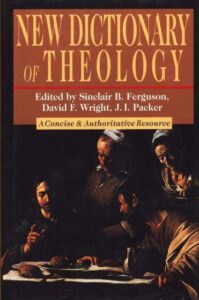
Ferguson, Sinclair B., Wright, David F., Packer, J. I. (eds.), New Dictionary of Theology, 1988:
“Gn. 2:7 refers to God forming Adam ‘from the dust of the ground’ and breathing ‘into his nostrils the breath of life’, so that man becomes a ‘living being’. The word ‘being’ translates the Hebrew word nep̄eš which, though often translated by the Eng. word ‘soul’, ought not to be interpreted in the sense suggested by Hellenistic thought (see Platonism; Soul, Origin of). It should rather be understood in its own context within the OT as indicative of men and women as living beings or persons in relationship to God and other people. The lxx translates this Heb. word nep̄eš with the Gk. word psychē, which explains the habit of interpreting this OT concept in the light of Gk. use of psychē. Yet it is surely more appropriate to understand the use of psychē (in both the lxx and the NT) in the light of the OT’s use of nep̄eš. According to Gn. 2, any conception of the soul as a separate (and separable) part or division of our being would seem to be invalid. Similarly, the popular debate concerning whether human nature is a bipartite or tripartite being has the appearance of a rather ill-founded and unhelpful irrelevancy. The human person is a ‘soul’ by virtue of being a ‘body’ made alive by the ‘breath’ (or ‘Spirit’) of God.”
– pp. 28, 29 (quoted from electronic edition, 2000).
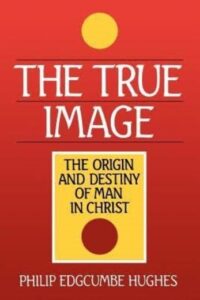
Philip Edgcumbe Hughes, The True Image: The Origin and Destiny of Man in Christ, Eerdmans, 1989:
What may be deduced from the Biblical revelation? First of all, that man as originally created was both potentially immortal and potentially mortal. In close association with this is his having been created potentially sinless, but also potentially sinful. The possibility of his sinning involved the possibility of his dying, just as the possibility of his not sinning involved the possibility of his not dying. As we have remarked earlier, this does not mean that man was originally created in a state of neutrality between righteousness and sinfulness and between living and dying; for, on the contrary, his creation in the divine image, which is the bond of his personal fellowship with his Maker, placed his existence quite positively within the sphere of godliness and life. His loving and grateful concurrence with the will of God, who is the source of his life and blessedness, would have ensured the continuation of his existence in unclouded blessing as he conformed himself to that image in which he is constituted. It was by his rebellion against his Creator that he passed from a positive to a negative relationship and brought the curse upon himself. His death, which is the sum of that curse, is also the evidence that man is not inherently immortal.
To contend that only the human soul is innately immortal is to maintain a position which is nowhere approved in the teaching of Scripture, for in the biblical purview human nature is always seen as integrally compounded of both the spiritual and the bodily. If this were not so, the whole doctrine of the incarnation and of the death and resurrection of the Son would be despoiled of meaning and reality. Man is essentially a corporeal-spiritual entity. God’s warning at the beginning, regarding the forbidden tree, ‘In the day that you eat of it you shall die,’ was addressed to man as a corporeal-spiritual creature – should he eat of it, it as such that he would die. There is no suggestion that a part of him was undying and therefore that his dying would be in part only.
The immortality, accordingly, of which the Christian is assured is not inherent in himself or in his soul but is bestowed by God and is the immortality of the whole person in the fulness of his humanity, bodily as well as spiritual.
– p. 400.

George Wisbrock, Death and the Soul After Life, ZOE-Life Books, Oakbrook, ILL, USA, 1990 (this is not the actual book cover):
… the LORD personally told Adam and Eve that they would die in the very day they disobeyed Him… The type of death they were promised was … immediate removal from the Garden of Eden and the immediate sentence of an eventual total departure from the consciousness of life as soon as they stopped breathing the breath of life…
If they had been more disciplined and patient in their selection of menus, they would eventually have eaten the fruit of the Tree of Life and only then BECOME immortal beings who would never had died. But because they accepted Satan’s lie that they would not die if they ate from the forbidden tree… they consequently received the reality of an instant spiritual death which separated them from the presence of their God…
… man’s death, as taught in The Bible, is not immediately followed by an uninterrupted continuation of consciousness in any of his supposed realms of incorporeal or bodiless existence… God’s concept of death declares it to be the very cause of man’s departure from ALL of life, conscious or otherwise…
The Word of God does not say that at death YOU… enter into a realm of continued awareness in order to consciously await another body into which YOU will eventually reincarnate. Instead, The Bible teaches that shortly after death YOU and I and everyone else are destined to enter into the grave.
The Scriptures do not say that man’s body goes to one place and that his alleged conscious-bearing ‘immortal soul’ or ‘spirit’ goes somewhere else at death. Instead, once the breath of life fully expires from a person who dies, all mental processes completely stop and that person begins to return to the dust of the earth.
… soul, in The Bible, means something entirely different than the traditional and orthodox belief about it being an incorporeal self who separates from the body at death…
[there are] more than sufficient evidence to demonstrate the difference between the Biblical meaning of ‘nephesh’ and the contemporary meaning of soul… a human ‘nephesh’ is indeed a MORTAL person who is only alive for as long as he breathes the breath of life…“According to [Gen 1:21], ‘nephesh’ does not refer only to man. Nor does it … have any reference to that assumed part of man which some people believe will separate from within his body at death. Instead… the created creatures of both the air and the sea have all been referred to by God as living ‘nephesh.’ … man and all of the creatures of the earth were each formed out of the dust of the ground. Then, when they received the breath of life within their flesh … both man and the creatures of the earth BECAME – not received – living ‘nephesh.’…
It is true that some Hebrews did begin to believe in the incorporeal immortality of ‘the soul’ a few centuries before the birth of Christ, but all such thoughts can be traced to the influence of the early Greek philosophers and not to a proper exegesis of The Bible. In fact, such thoughts seem to have occurred in large numbers only after those Hebrews, as subjects of the Roman Empire, began speaking and writing the Greek language…
…the Psalmist [Ps 35:3, 4]… [said], ‘… Let them be humbled and put to shame who seek after MY SOUL…’ If the human soul were an incorporeal entity dwelling within the human body, then how could that ‘immaterial soul’ be taken from someone’s body while he is still alive? Or, if the human soul were purely spiritual and not at all material in composition, how could someone else even see it in order to grasp hold of it so as to take possession of it?…
One very important piece of evidence supporting the idea of the same meaning for corresponding terms in both Covenants is that with only a few exceptions the entire Bible was written by Hebrews… all the authors of The Bible regarded corresponding words in the Old Covenant Scriptures and their own writings to be defined by the Hebrew word of the Old Covenant. So … each New Covenant Greek word of particular religious significance which has a corresponding word in the Old Covenant Hebrew Scriptures should be defined according to its corresponding Hebrew word. It is not, under any circumstances, to be given a pagan definition from an ancient Greek culture… Only by doing this can the entire Bible present us with a statement of harmonious continuity. For since Old Covenant prophecies were fulfilled through New Covenant events, all corresponding terms from both Covenants which describe those events must share the same definition…
Peter’s recognition of Jesus’ resurrection as the fulfillment of the Psalmist’s prophecy [Ps 16:10] makes a profound statement about the Biblical nature of both ‘sheol’ and the human soul. For since Jesus’ ‘psuche,’ His soul, had to be taken out of ‘hades,’ the grave, in order to prevent Him from experiencing decay, his resurrection out of ‘hades’ reinforces the Biblical concept that the human soul is subject to both death and decay. It also clearly indicates that both ‘sheol’ and ‘hades’ in The Bible equally represent the same place – the grave…
If the traditional and ‘orthodox’ beliefs in ‘sheol’ and ‘hades’ as an ‘infernal hell’ were a real place where ‘the unconverted’ are presently suffering everlasting punishment, then what purpose would there be to bring them out of ‘hell’ in order to face Judgment at the end of the age and then once again send them back down to ‘hell’ for Eternity after Judgment? I do not personally believe the God of our Creation would act in such an unjust manner by causing anyone to experience the consequence of his or her sinful actions without first allowing that person to face Judgment, an experience The Bible says no one will have until the end of time… Nor do I believe a truly loving and righteous God will cause ‘the unconverted lost’ to suffer throughout Eternity the type of hideous or macabre torments which are usually associated with modern man’s … superstitious beliefs… the modern teaching that a Loving, Just and Fair God would eternally punish ‘the lost’ in a Dantean type of ‘hell’ forever and ever is beyond question the most demeaning and degrading idea ever attributed to God!…
Unfortunately, the souls referred to in Revelation 6:9 and 20:4 are often mistakenly thought of as personal ‘spirit-beings’ who had earlier separated from ‘their former physical bodies’ at death. Quite to the contrary, however, the souls mentioned by John … actually represent some of the people who will eventually enter into God’s Kingdom toward the end of time… Because there are no such things as incorporeal human ‘spirits’ or ‘souls’… in neither of these two situations did John see immaterial and therefore invisible ‘spirit entities’ who had formerly resided within the bodies of those righteous men and women … Instead, he saw IN A VISION of those things that will take place on the Last Day of some of the people who will eventually live with God throughout Eternity…
That Jesus did not go up into a Heavenly Paradise to sit at God’s right side on the day He died may also be demonstrated by another very simple to understand act. Shortly after God brought Him up out of His grave on the third day after His death and burial, He said to Mary Magdalene, ‘Do not touch Me, for I have NOT YET gone up to My Father.’
– pp. 38, 39, 43, 44, 48, 49, 55, 71, 72, 73, 92, 108, 125, 126, 131, 146, 150, 230, 231, 331.
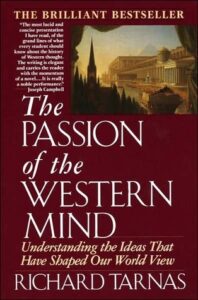
Richard Tarnas, Passion of the Western Mind: Understanding the Ideas That Have Shaped Our World View, 1991 (This cover is a from 1993 edition, Ballantine Books, New York, USA):
The Neoplatonic philosophical structure, developing simultaneously alongside early Christian theology in Alexandria, seemed to offer an especially fitting metaphysical language within which could be better comprehended the Judaeo-Christina vision. In Neoplatonism, the ineffable transcendent Godhead, the One, had brought forth its manifest image – the divine Nous or universal Reason – and the World Soul. In Christianity, the transcendent Father had brought forth his manifest image – the Son or Logos – and the Holy Spirit. But Christianity now brought dynamic historicity into the Hellenic conception by asserting that the Logos, the eternal truth which had been present from the creation of the world, had now been sent forth into world history in human form to bring that creation, by means of the Spirit, back to its divine essence. In Christ, heaven and earth were reunited, the One and the many reconciled. What had been the philosopher’s private spiritual ascent was now, through the Incarnation of the Logos, the historical destiny of the entire creation. The Word would awaken all mankind. Through the indwelling of the Holy Spirit would occur the world’s return to the One. That supreme Light, the true source of reality shining forth outside Plato’s cave of shadows, was now recognized as the light of Christ. As Clement of Alexandria announced, “By the Logos, the whole world is now become Athens and Greece.”
It is indicative of this intimacy between Platonism and Christianity that Plotinus and Origen, the central thinkers, respectively, of the last school of pagan philosophy and the first school of Christian philosophy, shared the same teacher in Alexandria, Ammonius Saccas (a mysterious figure about whom virtually nothing is known). Plotinus’s philosophy, in turn, was pivotal in Augustine’s gradual conversion to Christianity. Augustine saw Plotinus as whom “Plato lived again,” and regarded Plato’s thought itself as “the most pure and bright in all philosophy,” so profound as to be in almost perfect concordance with the Christian faith. Thus Augustine held that the Platonic Forms existed within the creative mind of God and that the ground of reality lay beyond the world of the senses, available only through a radical inward-turning of the soul. No less Platonic, although thoroughly Christian, was Augustine’s paradigmatic statement that “the true philosopher is the lover of God.” And it was Augustine’s formulation of Christian Platonism that was to permeate virtually all of medieval Christian thought in the West. So enthusiastic was the Christian integration of the Greek spirit that Socrates and Plato were frequently regarded as divinely inspired pre-Christian saints, early communicators of the divine Logos already present in pagan times – “Christians before Christ,” as Justin Martyr claimed. In ancient Christian icons, Socrates and Plato were portrayed among the redeemed whom Christ led forth from the underworld after his storming of Hades. In itself classical culture may have been finite and perishable, but from this view it was being reborn through Christianity, endowed with new life and new meaning. Thus Clement declared that philosophy had prepared the Greeks for Christ, just as the Law had prepared the Jews.
– pp. 102-104.
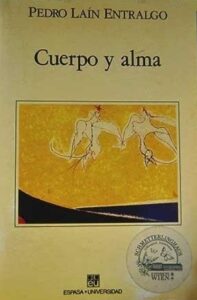
Pedro Laín Entralgo, Cuerpo y Alma, Espasa Calpe, Madrid, España, 1991 (En portugués, Corpo e Alma, 2003 – Ediciones Almedina, Portugal):
“Ni Jesús ni San Pablo dicen que la muerte humana consista en la separación de un alma inmortal y un cuerpo mortal. La tan sabida distinción paulina entre “sarx” (carne), “psykhé” (alma) y “pneuma” (espíritu) no es mencionada ni aludida en los textos que hablan de la resurrección de los muertos. ¿Cómo, pues, ha surgido y se ha hecho tradicional y punto menos que canónica la concepción del hombre como la unión de un alma y un cuerpo?…
El “alma separada” – el alma tras la muerte del cuerpo – existe en una situación “inconveniente” a su naturaleza, e incluso “contra su naturaleza”. Su estado en el cuerpo es más perfecto que fuera de él; unida al cuerpo se asemeja más a Dios que separada de él…
Esta concepción estructurista de la entera realidad del hombre conduce necesariamente a la idea de la ‘muerte total’ o Ganztod, como la llaman los actuales teólogos tudescos. Al morir, todo el hombre muere. Ante su muerte física, y más allá de la pervivencia en el mundo — fama, recuerdo y afecto de los que nos amaron — a que exclusivamente se refería la sentencia horaciana, todo hombre puede decir: omnis moriar. Pero, tras la muerte física, un misterioso designio de la sabiduría, el poder y la misericordia infinitas de Dios hace que el hombre que murió, el hombre entero, resucite a una vida esencial y misteriosamente distinta de la que en este mundo se mostraba como materia, espacio y tiempo. Más allá de la materialidad, de la espaciosidad y la temporeidad, el hombre vivirá según lo que su vida en el mundo hubiese sido. En esta vida perdurable tiene su objeto más propio la esperanza del cristiano. Por lo cual, después de haber dicho ese radical omnis moriar, moriré todo yo, el cristiano dice de sí mismo y piensa que pueden decir todos los hombres: omnis resurgam, todo yo resucitaré.”
– págs. 284, 286, 289.
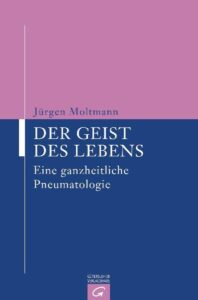
Jürgen Moltmann, Der Geist des lebens, Gütersloher Verlagshaus, Germany, 1991. (English: The Spirit of Life, Fortress Press, Minneapolis, USA, 1992):
In the degree to which Christianity cut itself off from its Hebrew roots and acquired Hellenistic and Roman form, it lost its eschatological hope and surrendered its apocalyptic alternative to this world of violence and death. It merged into late antiquity’s gnostic religion of redemption. From Justin onwards, most of the Fathers revered Plato as a “Christian before Christ” and extolled his spiritual world. God’s eternity now took the place of God’s future, heaven replaced the coming kingdom, the spirit that redeemed the soul from the body supplanted the Spirit as “the well of life,” the immortality of the soul displaced the resurrection of the body, and the yearning for another world became a substitute for changing this one.
– p. 89 (from English version).
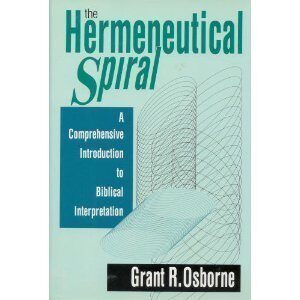
Grant R. Osborne, The Hermeneutical Spiral – A Comprehensive Introduction to Biblical Interpretation, Intervarsity Press, Illinois, USA, 1991.
Do not base doctrines upon the parables without checking corroborative details elsewhere. This is closely connected to the previous point, but because of widespread misuse of the parables in exactly this area I present it here as a separate point. For instance, the parable of the rich man and Lazarus (Lk 16:19-31) is often taken as proof of a compartmentalized Hades. However, such a doctrine is not found in Jesus’ teaching in Luke, and indeed nowhere else in Scripture. Therefore, the setting of the parable in Hades is local color rather than dogma and cannot be pressed too far.
– p. 249.
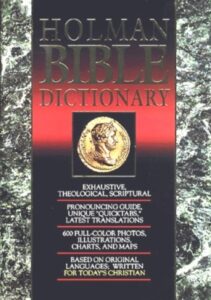
Holman Bible Dictionary, Holman Bible Publishers, Nashville, TN, USA, 1991:
Soul. The vital existence of a human being. The Hebrew word nephesh is a key Old Testament term (755 times) referring to human beings. In the New Testament, the term psyche retreats behind the ideas of body, flesh, spirit to characterize human existence. In the Bible, a person is a unity. Body and soul or spirit are not opposite terms, but rather terms which supplement one another to describe aspects of the inseparable whole person. See Anthropology; Humanity .
Such a holistic image of a person is maintained also in the New Testament even over against the Greek culture which, since Plato, sharply separated body and soul with an analytic exactness and which saw the soul as the valuable, immortal, undying part of human beings. In the Old Testament, the use and variety of the word is much greater while in the New Testament its theological meaning appears much stronger.
The soul designates the physical life. Vitality in all of its breadth and width of meaning is meant by the soul. The basic meaning of nephesh is throat. Thus, the Bible refers to the hungry, thirsty, satisfied, soul (Psalms 107:5, 107:9; Proverbs 27:7; Jeremiah 31:12, 31:25). The soul means the entire human being in its physical life needing food and clothing (Matthew 6:25). The breathing organs and the breath blown out from them also express individual life in animals as well as human beings (Job 11:20; Job 41:21; Acts 20:10). At times, then, soul can be interchanged with life (Proverbs 7:23; Proverbs 8:35-36) and can be identical with blood (Deuteronomy 12:23 ). A person does not have a soul. A person is a living soul (Genesis 2:7). That means a living being that owes life itself to the Creator just as does the animal (Genesis 2:19 ). For this life or soul, one gives all one has (Job 2:4 ). Satan is permitted by God to take health, that is flesh and blood, but Satan cannot take the bare life of a person (Job 2:5-6 ).
Soul designates the feelings, the wishes, and the will of humans. The work of the throat, its hunger and appetite, stands for the desire and the longing of the human being after power and sex, after satisfaction, and after even the evil (Proverbs 21:10), but also after God (Psalm 42:2-3). The soul can be incited, embittered, confirmed, unsettled, or kept in suspense (Acts 14:2, 14:22; Acts 15:24; John 10:24). The word mirrors the entire scale of feelings under the influence of the human being, even the psychological. The bitter soul of the childless, the sick, or the threatened (1 Samuel 1:10 ; 2 Kings 4:27 ; 2 Samuel 17:8) reminds us of the nephesh as the organ of taste that also stands for the entire embittered person.
The soul also knows positive emotions. The soul rejoices, praises, hopes, and is patient. Never in these cases is only one part of the human being meant. It is always the powerful soul as an expression of the entire personality (Psalm 33:20). In the command to love (Deuteronomy 6:5 ; Mark 12:30 ), the soul stands next to other expressions for the human being to emphasize the emotional energy and willpower of the human being all rolled into one.
The soul designates the human person. Soul is not only a synonym with life. One can also speak of the life of the soul (Proverbs 3:22 ). Every human soul (Acts 2:43 ; Romans 2:9 ) means each individual person. The popular expression used today “to save our souls” goes back to this biblical way of thinking (1 Peter 3:20). It means to save the entire person. In legal texts, the soul is the individual person with juristic responsibilities (Leviticus 17:10, a blood-eating soul). Connected with a figure showing statistics or numbers of people, soul becomes an idea in the arena of the statistician (Genesis 46:26-27 ; Acts 2:41). At times, soul simply replaces a preposition such as the expression “let my soul live,” which means “let me live” (1 Kings 20:32). It is even possible for all the nuances of meaning to sound forth together in the same expression. For instance, in Psalm 103:1 , we read, “Bless, Yahweh, O my soul.” This includes the throat as the organ of life, the soul as the totality of capabilities; my own personal life which experiences the saving actions of Yahweh our God; my person; my own “I”; and the vital, emotional self.
Soul designates the essential life. Physical life is given and maintained by God (Matthew 6:25-34 ). Meaningful and fulfilled life comes only when it is free to give itself to God as a disciple of Jesus Christ. Life is the highest good when it is lived according to God’s intentions and not used up in search for material and cultural goods (Mark 8:34-37 ). This life is stronger than death and cannot be destroyed by human beings (Matthew 10:28). The soul does not, however, represent a divine, immortal, undying part of the human being after death as the Greeks often thought. Paul, thus, avoids the word soul in connection with eternal life. There is a continuity between the earthly and the resurrected life that does not lie in the capabilities or nature of mortal humans. It lies alone in the power of the Spirit of God (1 Corinthians 15:44 ). According to the Bible, a human being exists as a whole unit and remains also as a whole person in the hand of God after death. A person is not at any time viewed as a bodiless soul.
Immortality. The quality or state of being exempt from death. In the true sense of the word, only God is immortal (1 Timothy 6:16; see 1 Timothy 1:17; 2 Timothy 1:10), for only God is living in the true sense of the word (see Life). Humans may be considered immortal only insofar as immortality is the gift of God. Paul points us in this direction. In Romans 2:7 , Paul says, “To those who by patiently doing good seek for glory and honor and immortality, he will give eternal life” (NRSV). Paul also explained that the perishable nature of human life will put on the imperishable and that the mortal nature of human life will put on immortality. When that happens, the saying concerning victory over death will have been fulfilled (1 Corinthians 15:53-55 ; see Isaiah 25:8; Hosea 13:14). As it is, humans in their earthly life are mortal; they are subject to death.
Thus, eternal life is not ours because we have the inherent power to live forever; eternal life and immortality are ours only because God chooses to give them to us. Most of the time, we are given immortality after death. Those who did escape death—Enoch (Genesis 5:24 ) and Elijah (2 Kings 2:10-11 )—did so only by the power of God and not by some inherent power they had to live forever. See Eternal Life .
Resurrection. The doctrine, event, and act of persons being brought from death to unending life at the close of the age.
Old Testament. The preexilic portions of the Old Testament contain no statements which point certainly to a hope of resurrection from the dead even though some of Israel’s neighbors had such a belief. Death is the end of human existence, the destruction of life (Genesis 3:19; Job 30:23 ). In isolated instances revivification occurs (being brought back to life from death but only as a temporary escape from final death; 1 Kings 17:17-22 ; 2 Kings 4:18-37 ; 2 Kings 13:21 ). In addition, God took from the earth two Old Testament figures before their deaths: Enoch (Genesis 5:24) and Elijah (2 Kings 2:9-11). The scarcity of these statements and the lack of reflection on their meanings, however, point to the absence of any consistent doctrinal conception of resurrection from the dead.
Similarly, the Psalms are bereft of clear thought on resurrection. Many of the songs, however, express a hope that communion with God, begun on earth, will have no end (as in Psalm 16:11 ; Psalm 49:15 ; Psalm 73:24 ). The Song of Moses (Deuteronomy 32:1 ) and the Song of Hannah (1 Samuel 2:1 ) assert that Yahweh kills and makes alive. These expressions of hope in God may not suggest a doctrine of resurrection from the dead. They at least confess a conviction that the living God is able to intervene in life’s darkest hours. They grope for a firm hope in justice and help beyond the grave. They may reflect the beginnings of a doctrine of resurrection.
The prophets proclaimed hope for the future in terms of national renewal (see Hosea 6:1-3; Ezekiel 37:1). So pointed is the prophetic expression of national hope that the New Testament writers sometimes used the language of the prophets to expound the doctrine of resurrection (compare Hosea 13:14; 1 Corinthians 15:55). The prophetic statements, however, do not necessarily attest to the hope of individual resurrection from the dead but profess the sovereignty of God over all His subjects, even death.
On the other hand, Isaiah 26:19 and Daniel 12:2 decidedly teach a belief in resurrection. The Old Testament emphasis on the sovereignty of God in all matters easily led to the prophetic statements.
The Old Testament statements about resurrection are scant and do not reveal clear theological reflection. The emphasis upon Yahweh as the God of present life tended to make Judaism a this-worldly religion. The future was generally interpreted as a national future under the sovereign rule of Yahweh. In New Testament times the Saduccees still did not believe in resurrection. The belief, however, in God as sovereign Lord over all, even death, eventually flowered in the brief but salient assertions of the Books of Isaiah and Daniel and possibly in the Psalms. See Eschatology ; Future Hope ; Sheol.
New Testament Jesus’ preaching presupposed a doctrine of resurrection. Opposition by the Sadducees, who denied the resurrection, gave Jesus the opportunity to assert His own thought on the matter (Mark 12:18-27; Matthew 22:23-33; Luke 20:27-38; compare Deuteronomy 25:5-10).
John’s Gospel presents Jesus as the mediator of resurrection who gives to believers the life given Him by His Father (John 6:53-58 ). Jesus is the resurrection and the life (John 11:24-26). Jesus pointed to a resurrection of the righteous to eternal life and of the wicked to eternal punishment (Matthew 8:11-12; Matthew 25:31-34, 25:41-46; John 5:28-29). In His postresurrection appearances Jesus had a body that was both spiritual (John 20:19, 20:26) and physical (John 20:20, 20:27; John 21:13, 21:15) in nature.
The greatest biblical exponent of resurrection was Paul. For him, resurrection was the final event which would usher Christians out of the bodily struggle of the present age into the bodily glory which will accompany Jesus’ second coming (Philippians 3:20-21). In resurrection, God’s new creation will reach completion (2 Corinthians 5:17-21). The bedrock of hope for Christian resurrection is the resurrection of Christ, the foundation of gospel preaching (1 Corinthians 15:12-20). Those who follow Christ are organically related to Christ in His resurrection from the dead; Christ is the first fruits of an upcoming harvest (1 Corinthians 15:20-23). Destruction awaits those who do not follow Christ (Philippians 3:19).
Paul’s discourses on the nature of the resurrected body broadens the Old Testament idea of a restored Israel to include the redemption of persons complete with bodies. Paul viewed the human person as a psychosomatic unity. He recognizes no truth in the Greek idea of a separation of body and soul. (See 2 Corinthians 5:1-10). Those united to Christ in faith become not only one with Him in spirit but also one with Him in body (1 Corinthians 6:15). The resurrected body will be a spiritual body, different from the present physical body (1 Corinthians 15:35-50 ); but it will have continuity with the present body because Christ redeems the whole person (Romans 8:23 ).
The New Testament unquestionably affirms a doctrine of resurrection of all persons from the dead. Humanity has a corporate destiny to encounter just and divine response to faithfulness and unfaithfulness (Acts 24:15). A resurrection body and life in the consummated kingdom of God will characterize the resurrection of those who follow Christ.
– Entries “Soul”, “Immortality” and “Resurrection” (online version).
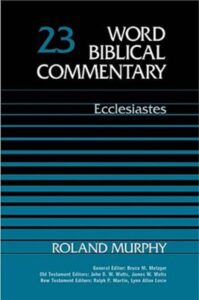
Roland E. Murphy, Word Biblical Commentary: Ecclesiates. Word, Incorporated, Dallas, TX, USA, Vol. 23A, 1992:
“The note of death continues. The process described here is the reversal of Gen 2:7. The end of life is the dissolution (not annihilation; the Israelites never speculated how the “I” was in Sheol; cf. Eccl 9:10). Humans return to the dust (Gen 3:19) whence they came, while the life-breath given by God returns to its original possessor. This is a picture of dissolution, not of immortality, as if there were a reditus animae ad Deum, “the return of the soul to God.” There is no question of the “soul” here, but of the life-breath, a totally different category of thought. Hence there is no reason to deny this verse to Qoheleth. K. Galling, A. Lauha, and others argue that it must belong to a glossator because it contradicts 3:21, where Qoheleth denies the affirmation that the human רוּחַ rûah goes upward in contradistinction to the רוּחַ rûahi of animals. But the context of 3:21 is polemical. Some assert there is a difference between life-breath in humans and animals; Qoheleth’s query (“who knows?”) denies any qualitative difference. But he certainly shares with the rest of the OT that God is the owner and donor of life, i.e., the life-breath (Ps 104:29–30; Job 33:4; 34:15; see also Sir. 40:11b, Hebrew text).”
– Commentary on Ecclesiastes 12:7, p. 120.

